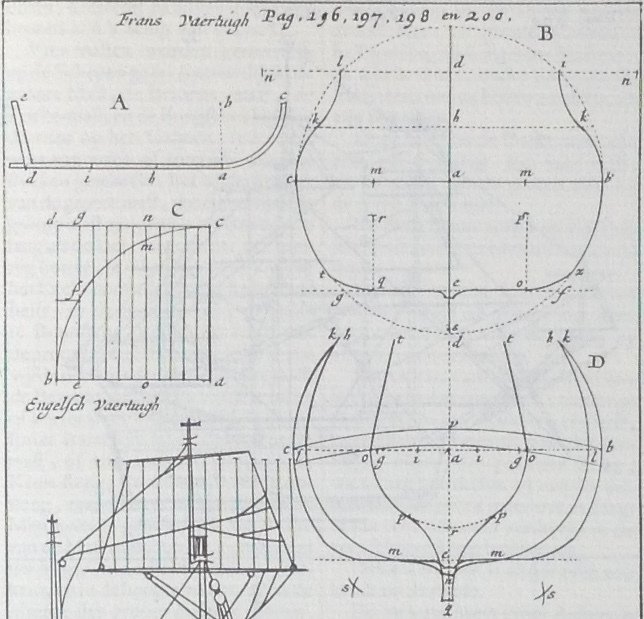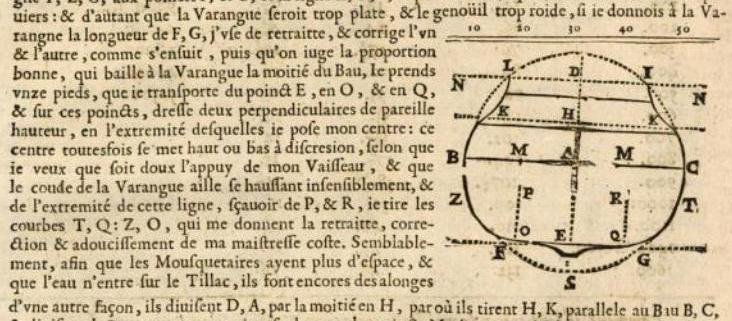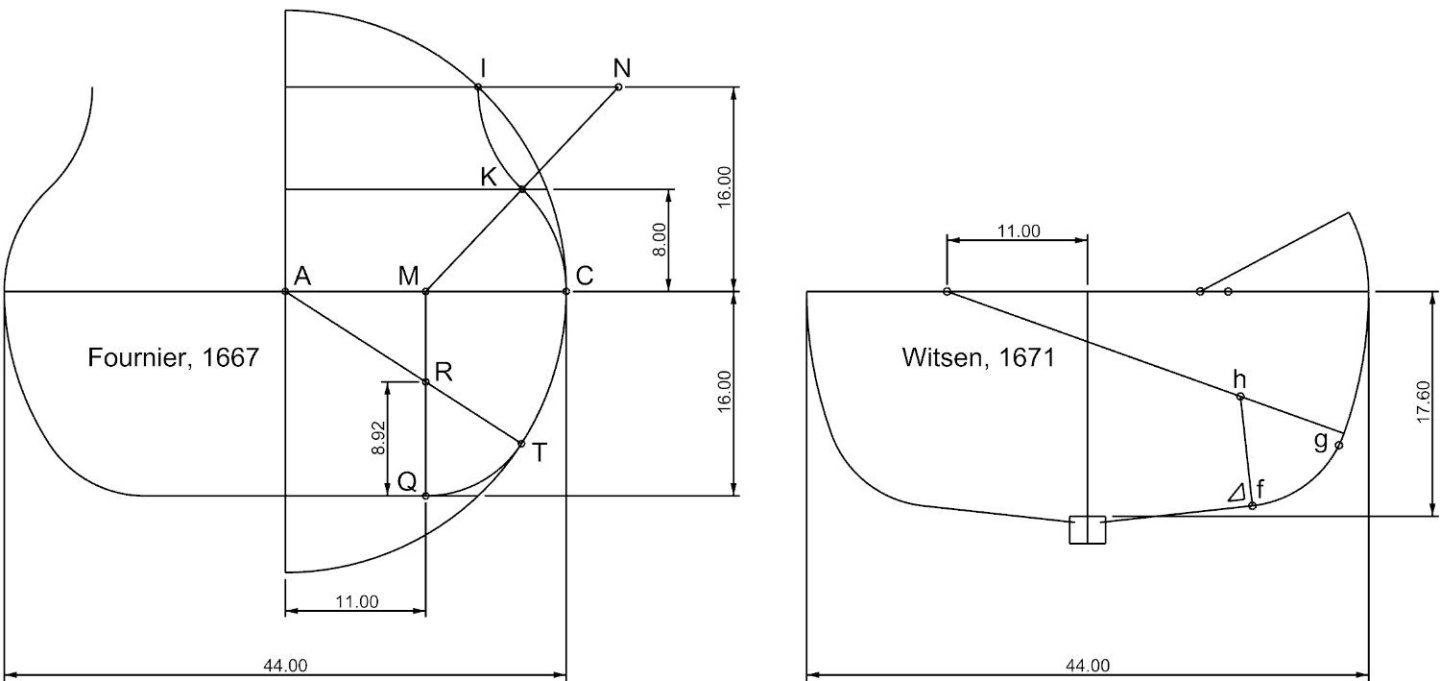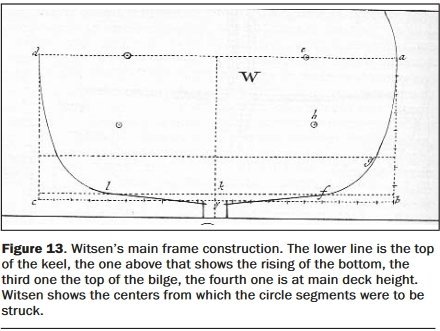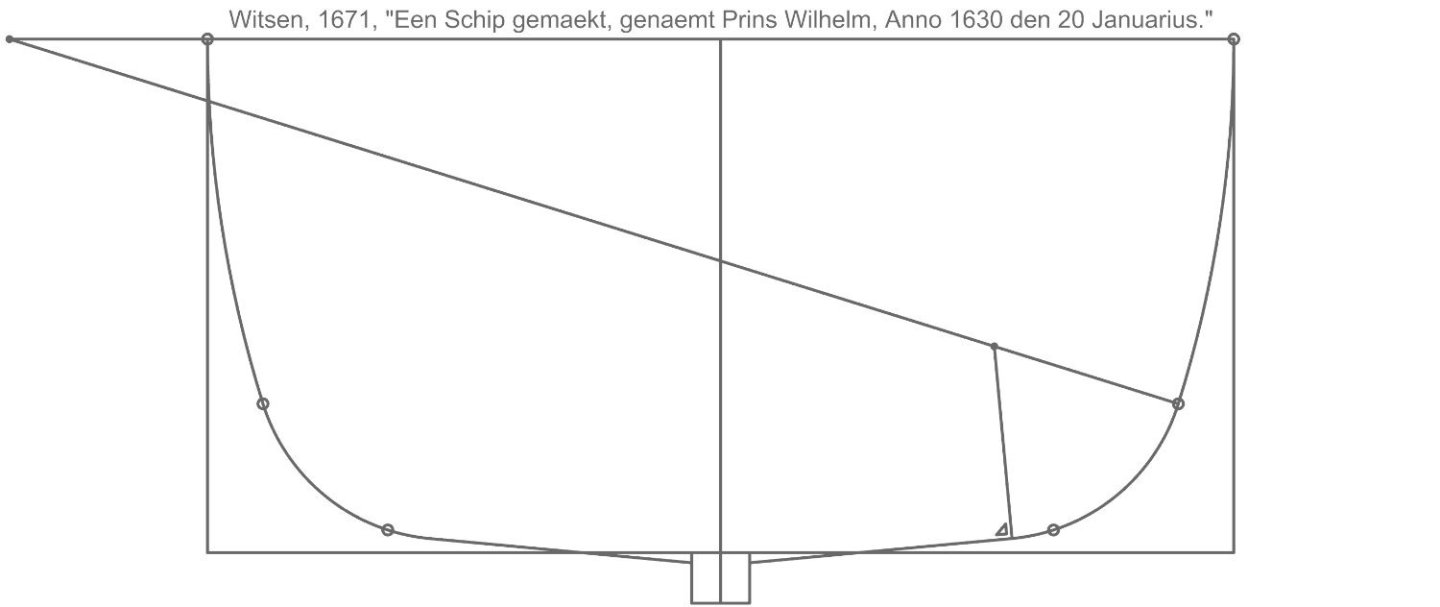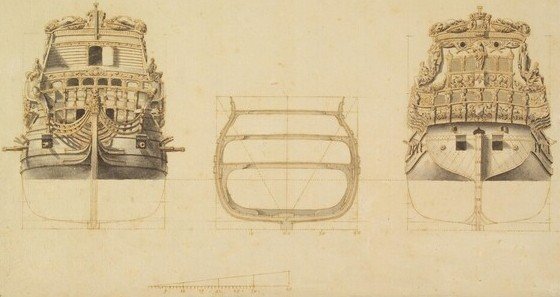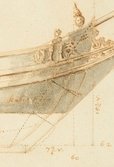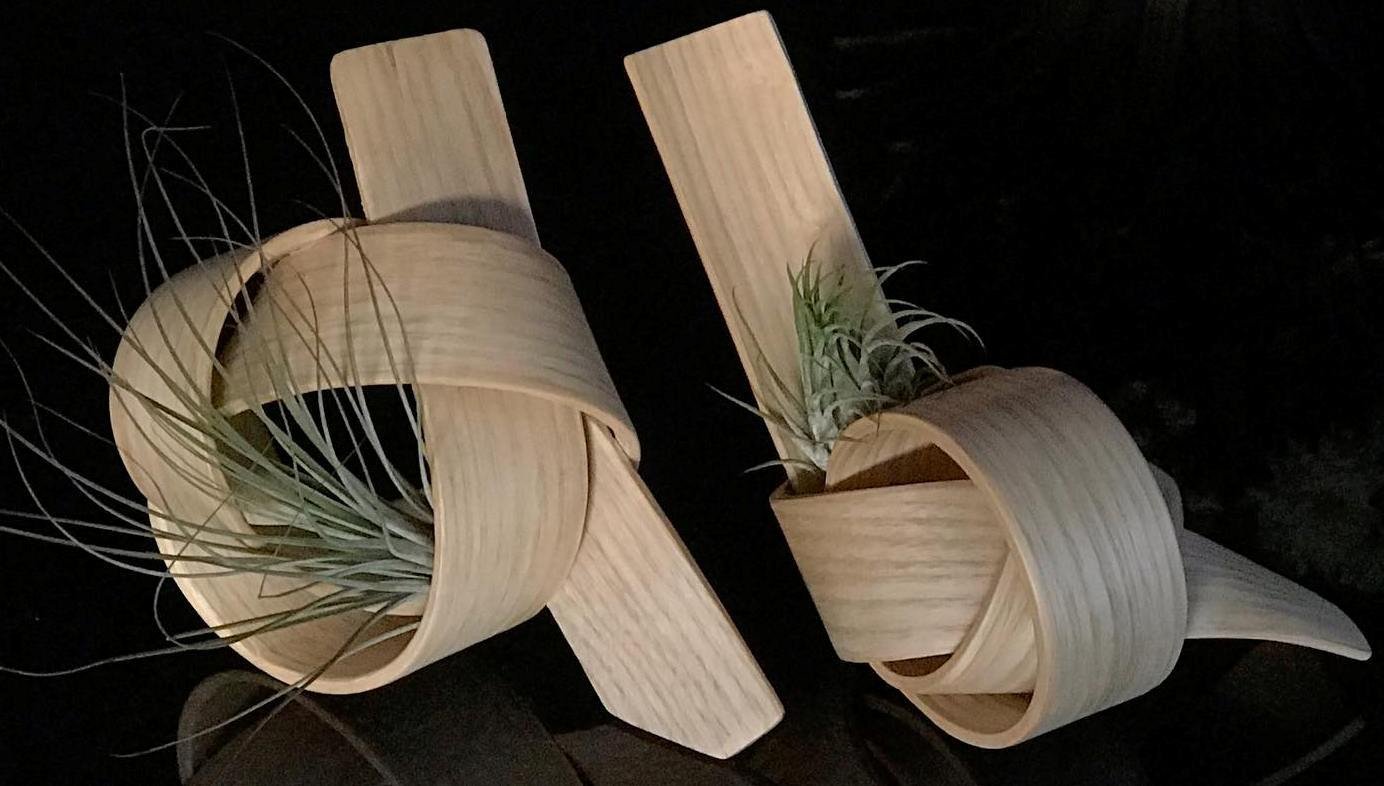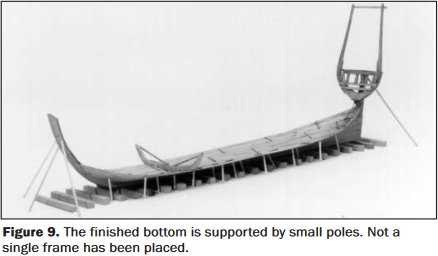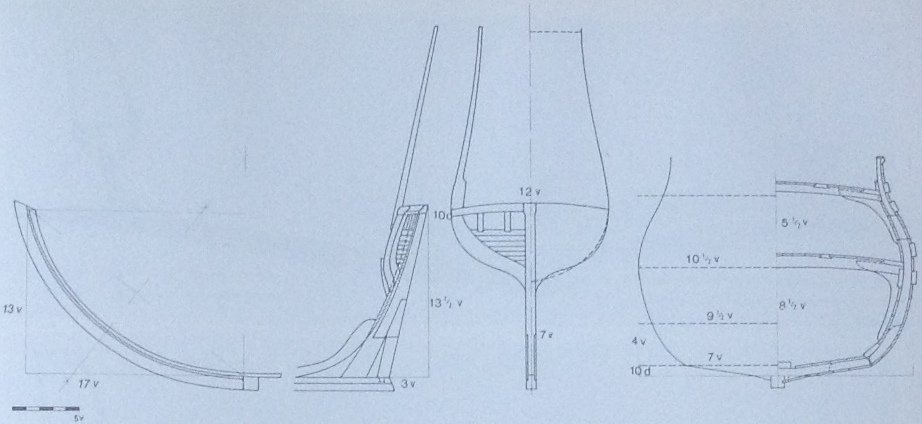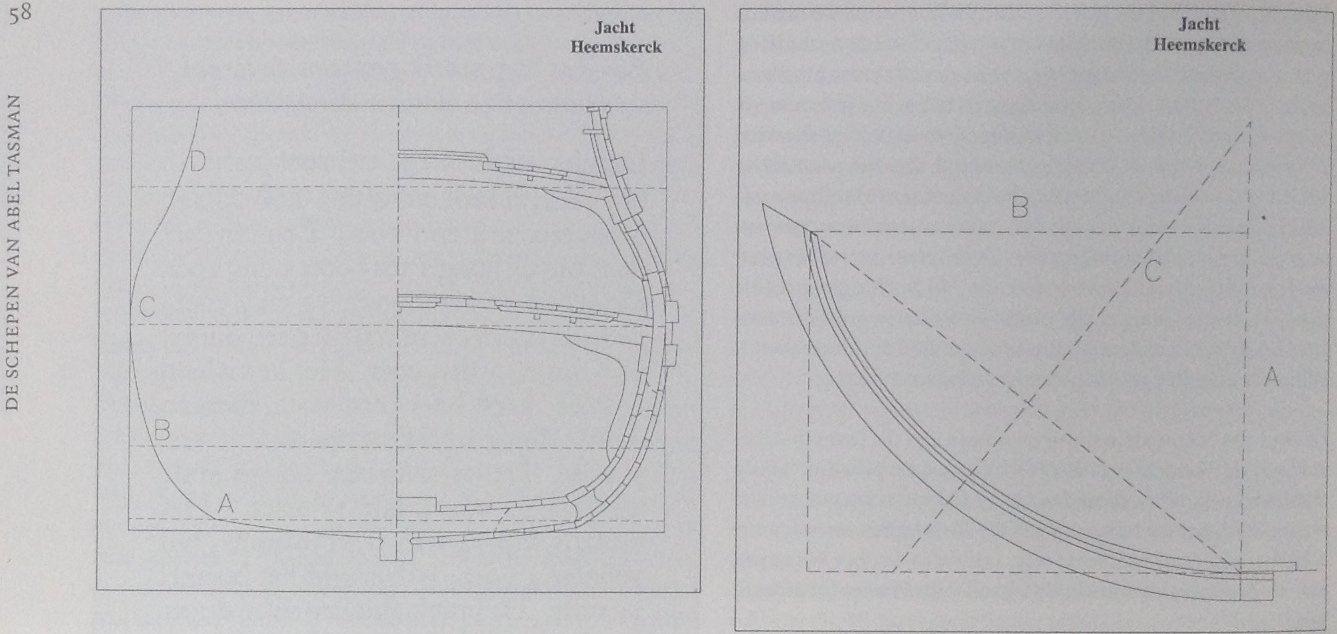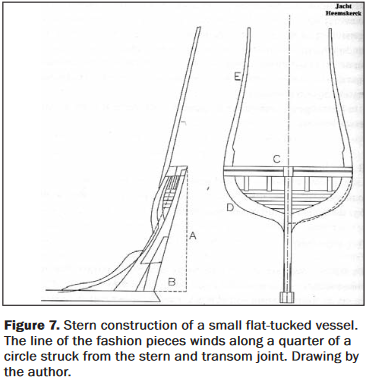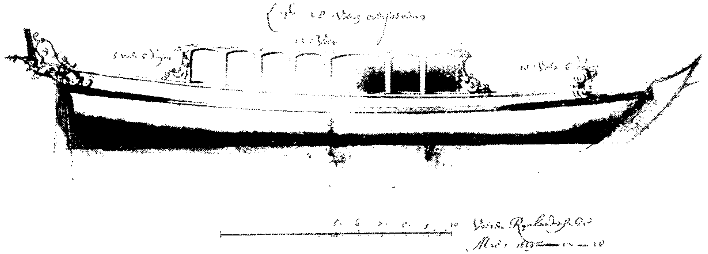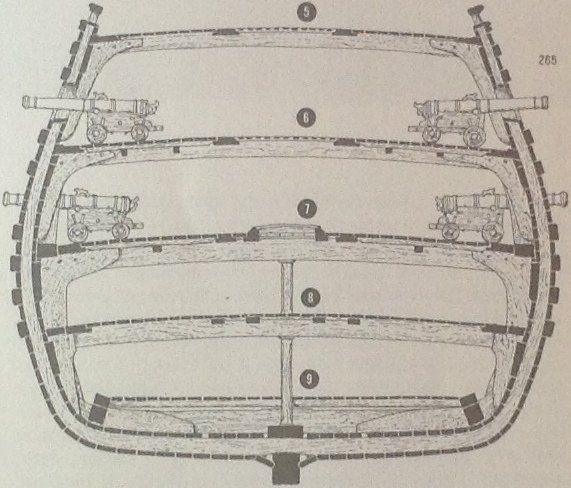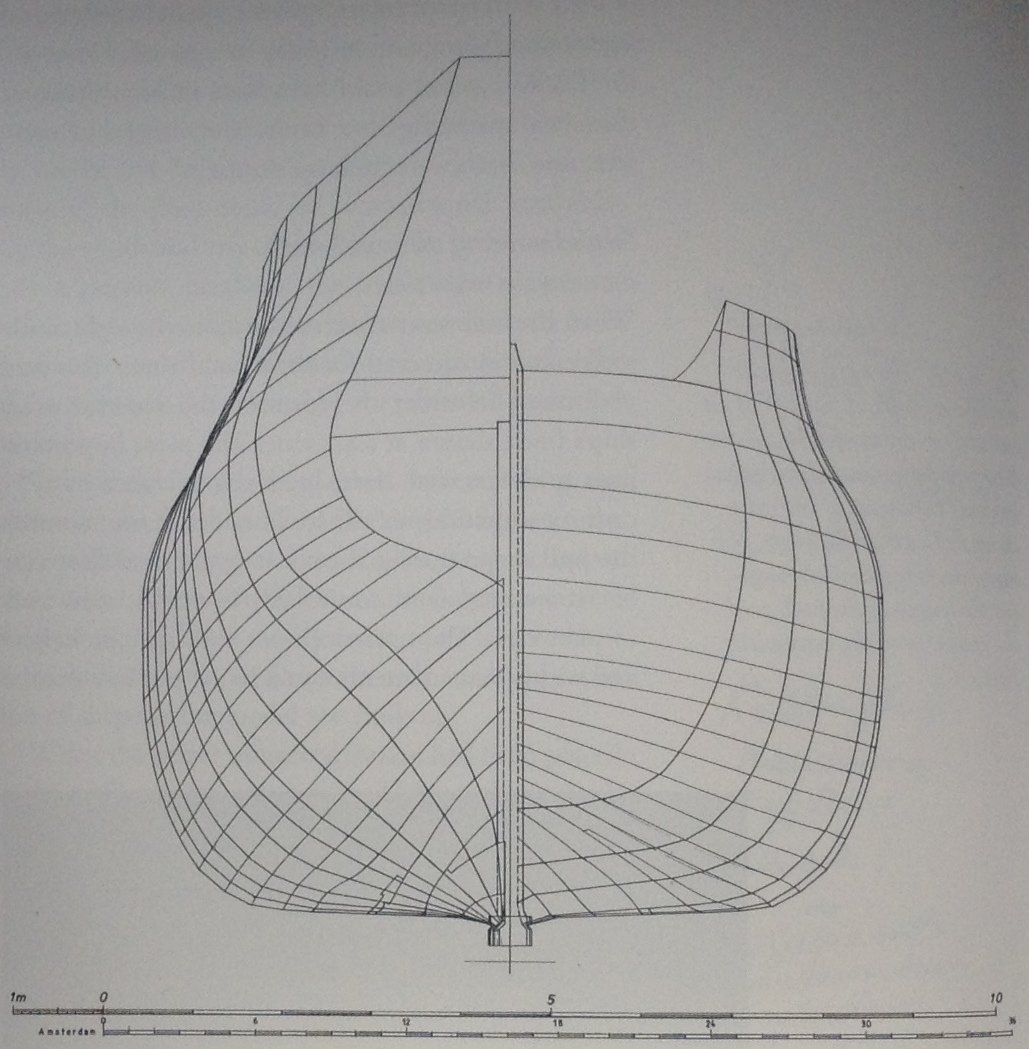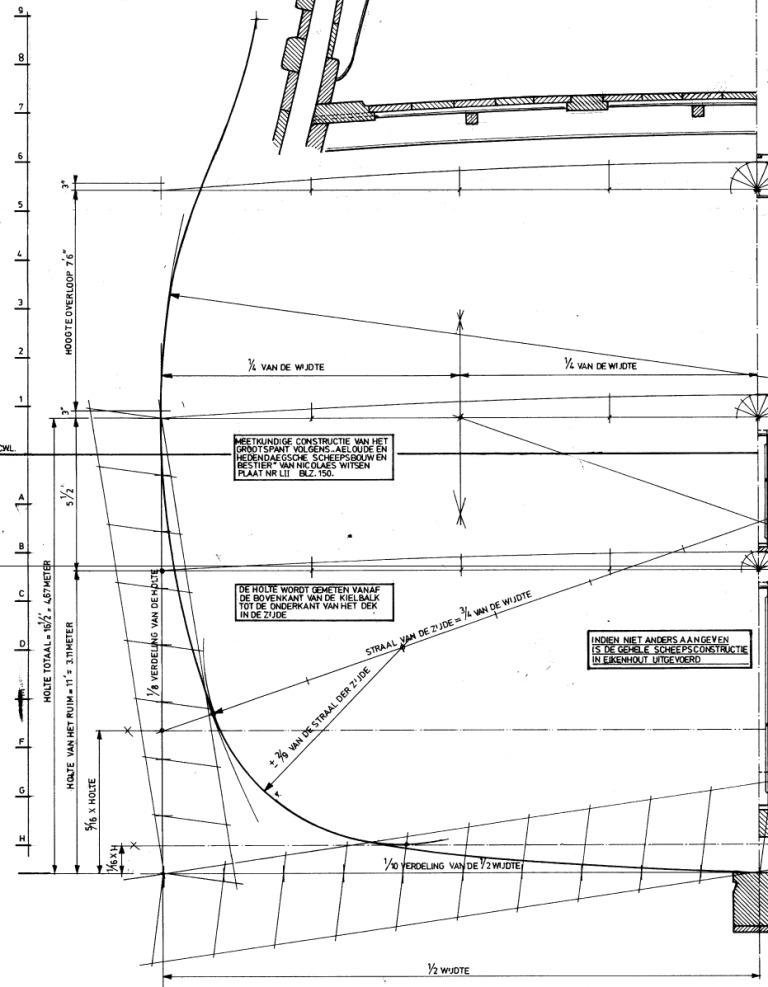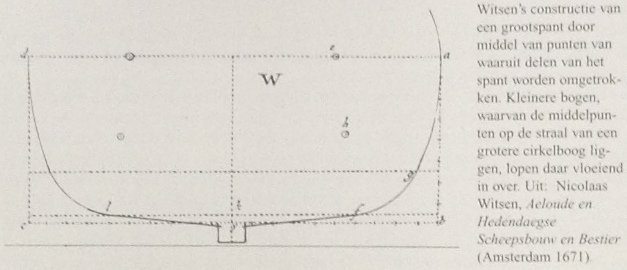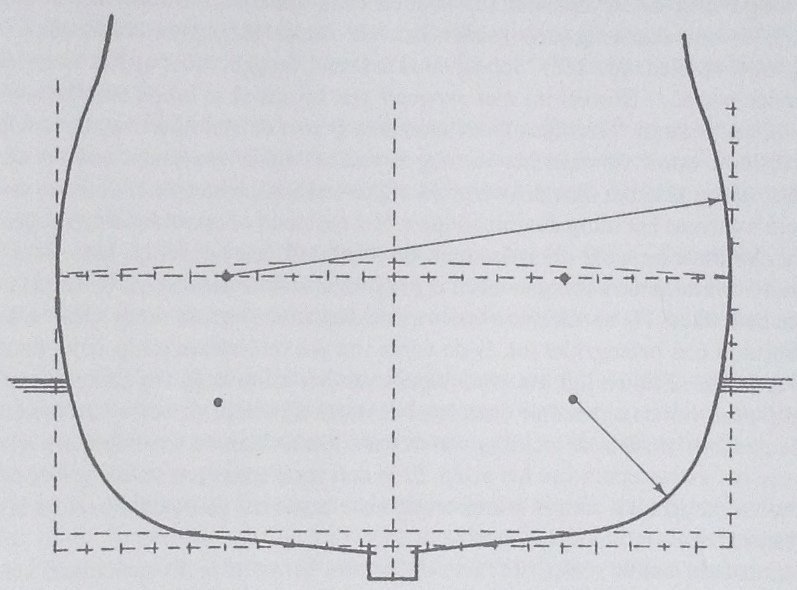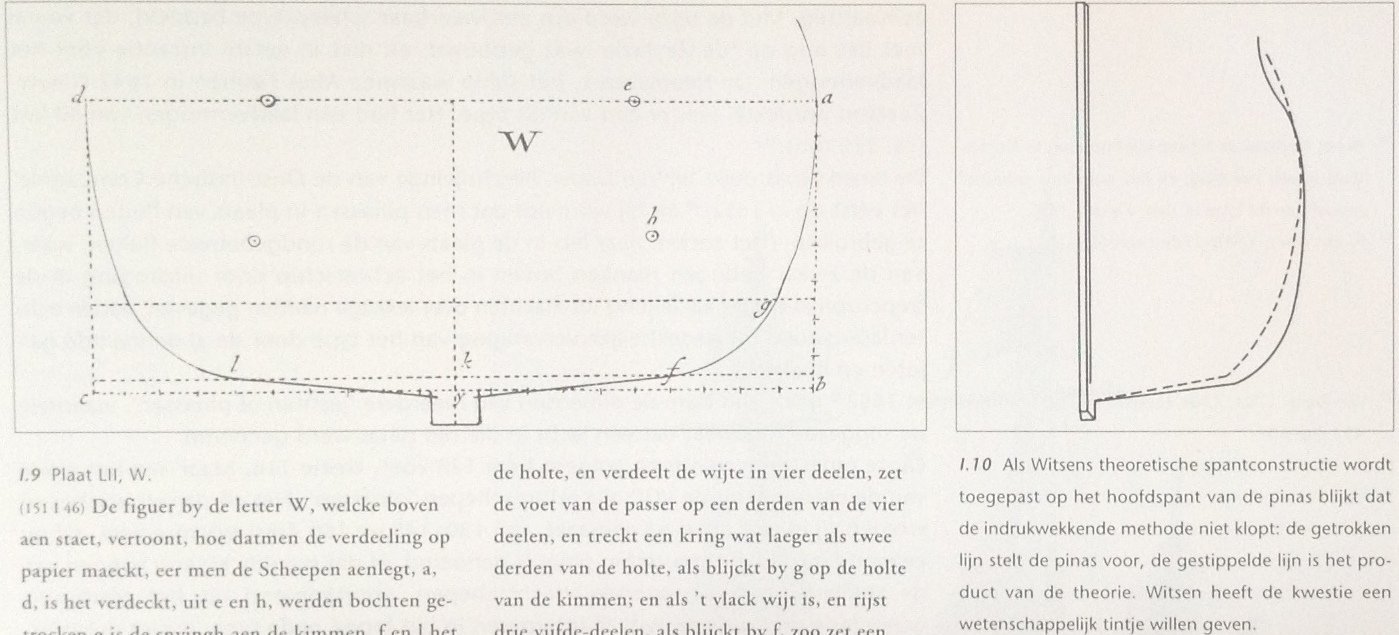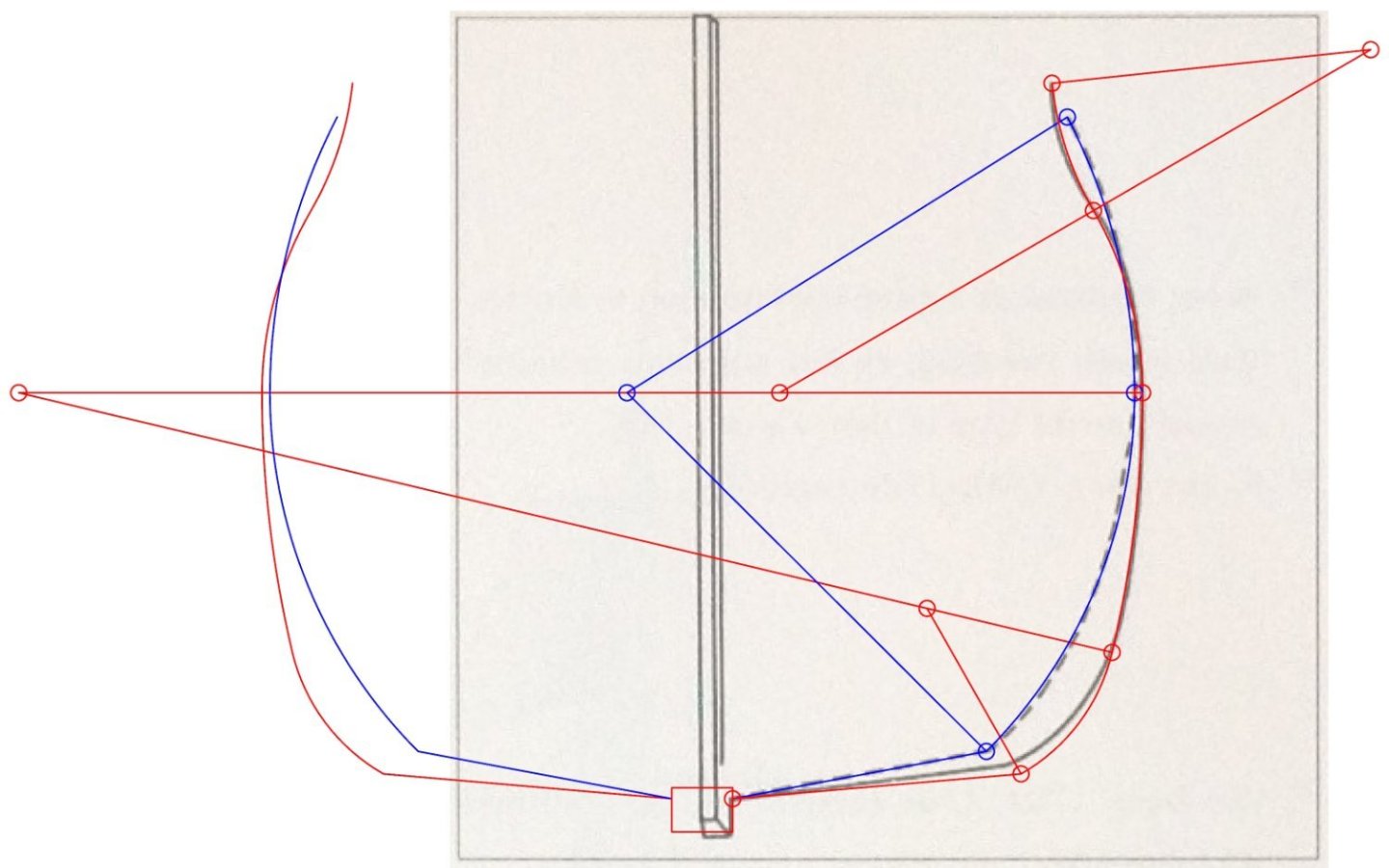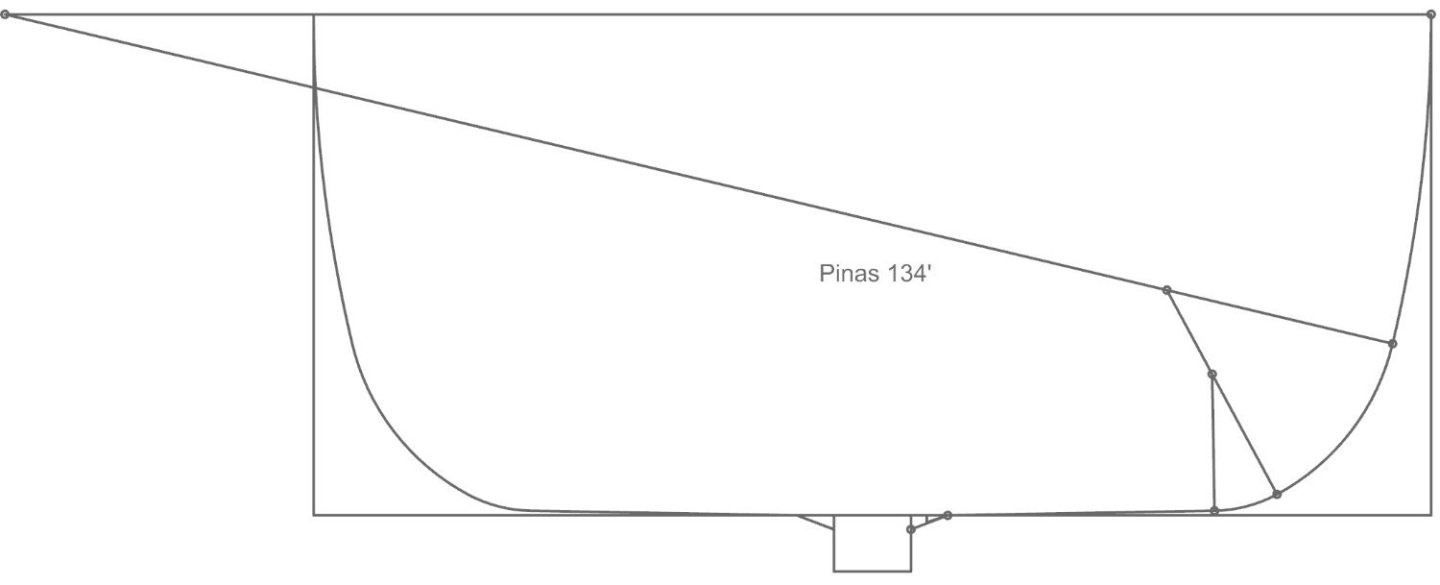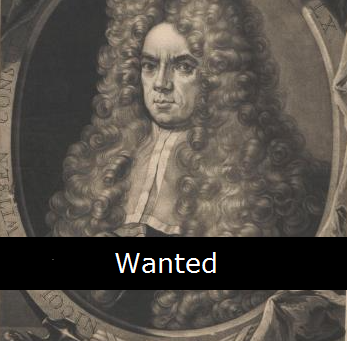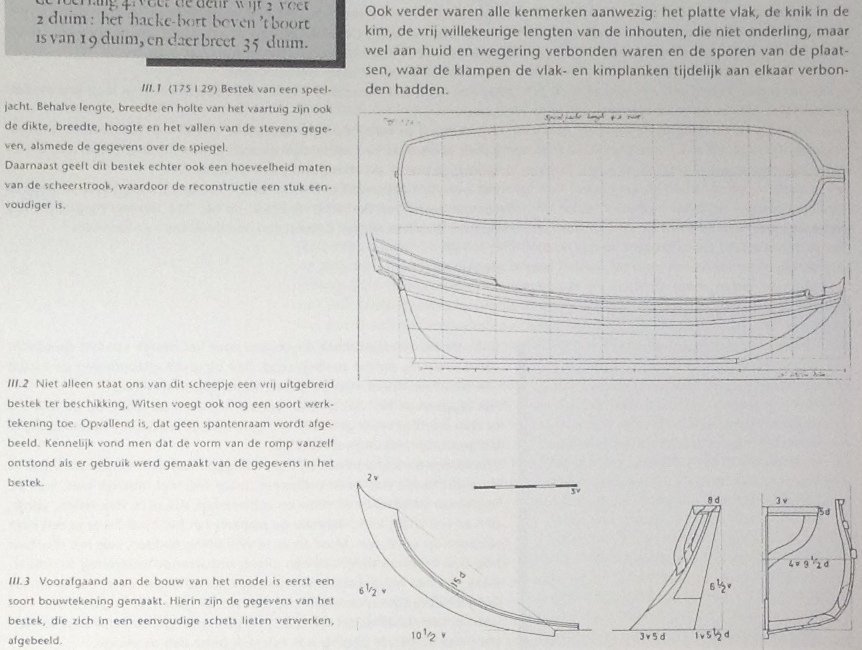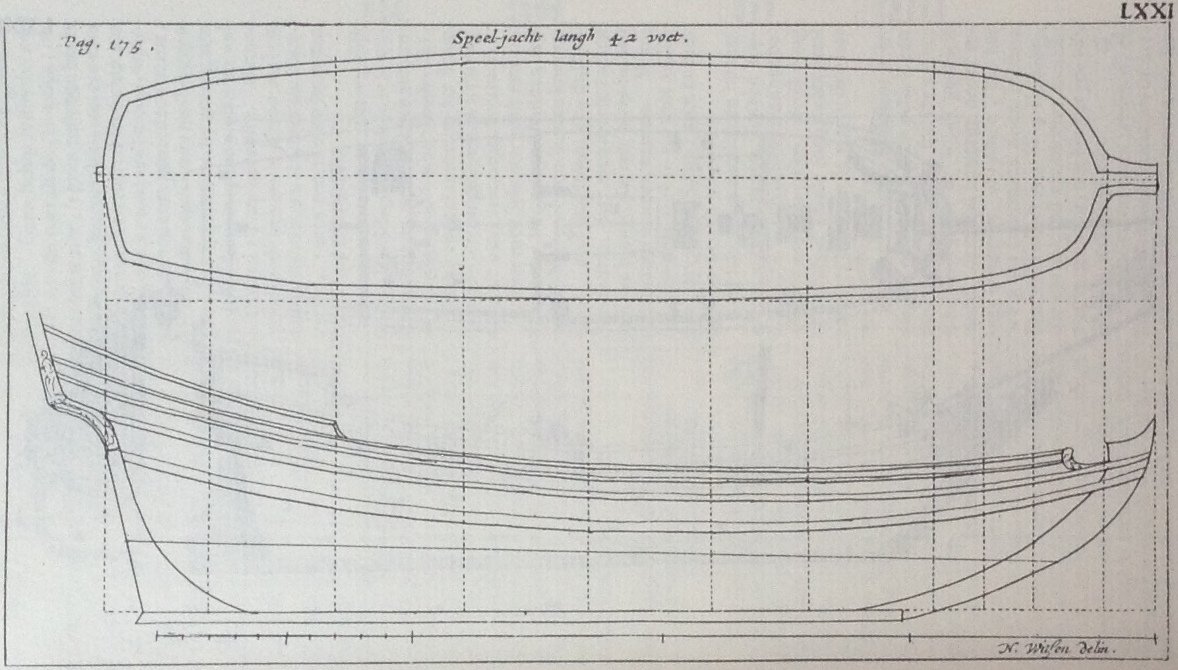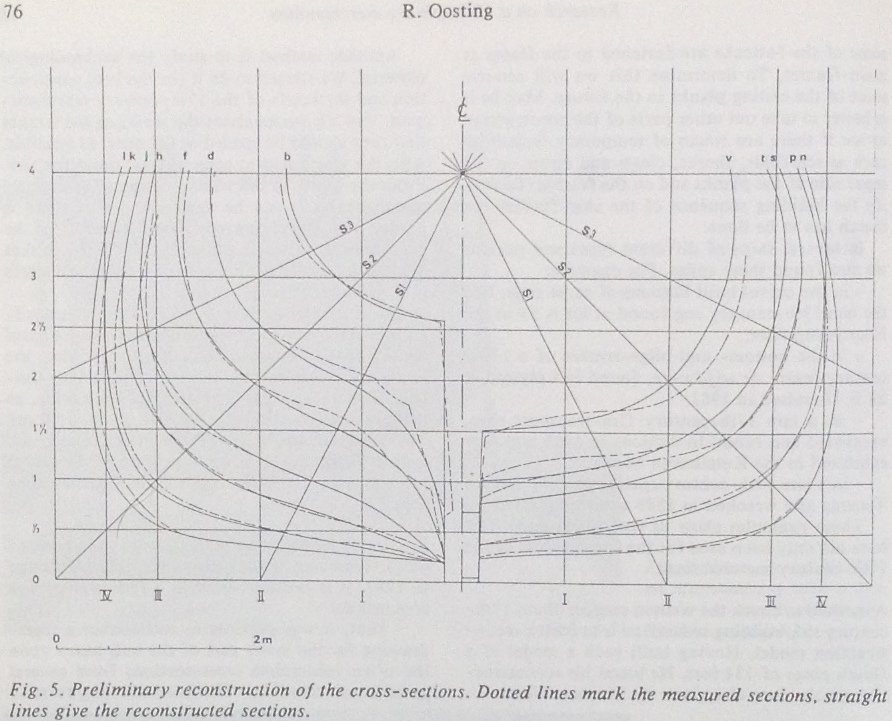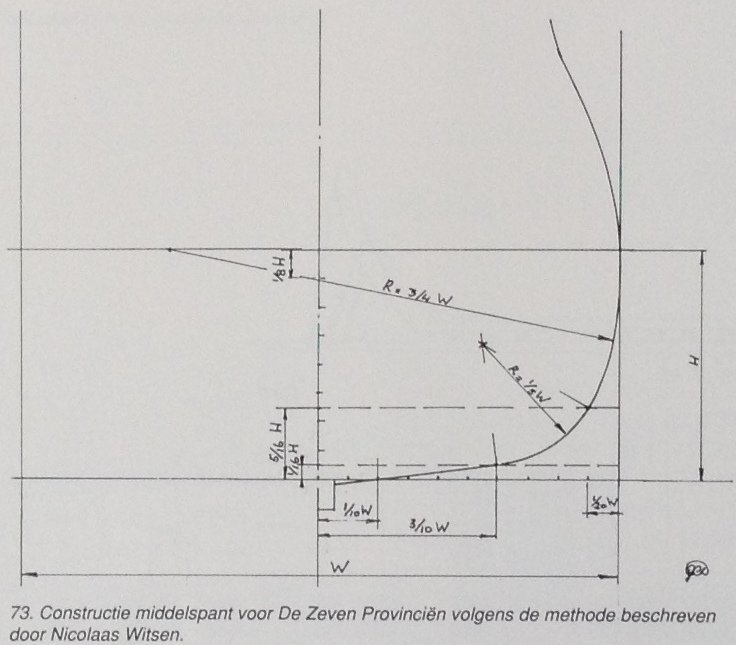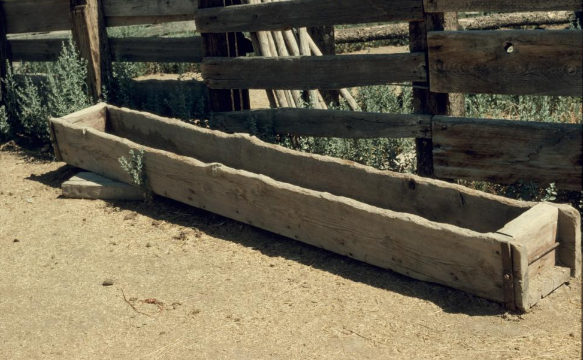
Jules van Beek
Members-
Posts
56 -
Joined
-
Last visited
Profile Information
-
Gender
Not Telling
-
Location
France
Recent Profile Visitors
The recent visitors block is disabled and is not being shown to other users.
-
Technical drawings & Dutch shell first
Jules van Beek replied to Jules van Beek's topic in Nautical/Naval History
Hello Harvey, Thank you for your reaction. To be clear: I would certainly not present someone else's work without attribution. But things were surely different in seventeenth century Holland. Witsen's father was the sheriff of Amsterdam, and Witsen himself studied law in Leiden and graduated as a doctor in law. Still he must not have thought it a crime to present somenone's work without mentioning its author. As far as I know, Witsen never had any legal trouble because of the publication of his book. What he did must not have been considered unlawful, or even unethical, in his time. For me it is remarkable to see that the line "presenting someone's work without mentioning the author is not the same as presenting someone's work and claiming it as your own" jumped out at you. The fact that Hoving accuses Witsen of being a thief and a deceiver, without providing any evidence, does not seem to stir up that same emotion for you. The key point for me is that Hoving claims that Witsen stole his design method from Fournier. A claim for which Hoving provides no evidence, and the evidence I provided proves the opposite: that Witsen did not steal his design method from Fournier. You are not a lawyer, and neither am I, but I think mister Witsen would have the right to sue mister Hoving for slander in the present time. Kind regards, Jules -
 Doreltomin reacted to a post in a topic:
Technical drawings & Dutch shell first
Doreltomin reacted to a post in a topic:
Technical drawings & Dutch shell first
-
Technical drawings & Dutch shell first
Jules van Beek replied to Jules van Beek's topic in Nautical/Naval History
Hello all, Part 3 We repeated in part 1 that Hoving in his book of 1994 claimed that: "It appears that Witsen, who had knowledge of the mathematical methods used elsewhere in Europe, designed this formula himself, out of status considerations, or out of the urge to find explanations for existing phenomenae." And in part 2 we found Hoving's substantiation for his 1994 claim: "Witsen borrowed his mysterious construction of the "Dutch" main frame from Georges Fournier's Hydrographie (1646)" Let's find out if it makes sense to say that Witsen "borrowed" from Fournier; to say that Witsen stole from Fournier. Here is the third part of my critical comments on: Ab Hoving, Dutch Shipbuilding in the Seventeenth Century, in: Nautical Research Journal, 53.1, spring 2008. Witsen and Fournier If I understand correctly, Hoving's reason for claiming that Witsen 'borrowed' from Fournier is that Witsen copied work from Oliveira, Furttenbach and Dudley without mentioning them as his sources, and therefore Witsen must have copied work from Fournier also without mentioning Fournier as his source, and presented Fournier's work as his own. It certainly is true that Witsen copied work from Oliveira, Furttenbach, Dudley and Fournier, but it is also very clear that he did so: Witsen copied the figures from these four authors on his own copper plates and had these printed for his books. Witsen may not have mentined the authors of the original figures, but he did not present the figures of the other authors as his own work either. In all these cases it is very clear that Witsen made direct copies from the other author's work; as Hoving himself says: "on many occasions it is easy to determine that he "borrowed" from other authors". To get more to the point, in the case of Georges Fournier's 'Hydrographie': Witsen names "P. Fournier" on page 4 of his foreword of his book of 1671, Witsen translates Fournier's description of ship design beginning on page 196 of his book of 1671, and Witsen gives four figures of Fournier's 'Hydrographie' on plate LXXXII of his book of 1671. Here are those four copied figures: Witsen, Aeloude ..., 1671, detail of Plate LXXXII, opposite page 198. Witsen's copies of four figures from Fournier's 'Hydrographie'. From this it is clear that there is absolutely no doubt that Witsen copied the work of Fournier. And, although Witsen gives no credit to Fournier in his main text, he does not present Fournier's work as his own work either. But Hoving is making another claim in the case of Witsen copying the work of Fournier as well: Witsen presented the work of Fournier as his own; according to Hoving, Witsen presented Fournier's method for designing the main frame as the method Dutch shipwrights used to design their main frames. Presenting someone's work without mentioning the author is not the same as presenting someone's work and claiming it as your own. Hoving says in his article that Witsen on the one hand copied Fournier's work openly, like he did with the work of Oliveira, Furttenbach and Dudley, but on the other hand stole Fournier's work while claiming it as his own. I think that is an extraordinary claim, a claim Hoving does not substantiate in his article, he just states as a fact that: "Witsen borrowed his mysterious construction of the "Dutch" main frame from Georges Fournier's Hydrographie (1646)." So let's try to do mister Hoving's job and try to find out if it is justified to say that Witsen stole the construction of the main frame from Fournier. While the easiest way to find out if Witsen stole his figure W from Fournier's figure would be to compare the figures of both authors, Hoving does not present Fournier's original figure in his article; he only shows Witsen's figure W. So we have to find Fournier's figure ourselves. Fournier's figure was first published in the chapter "How to trace the main frame of a Ship, in the modern way" of his 'Hydrographie' of 1643. (There is no 'Hydrographie' of 1646 as Hoving claims) That same figure was published in Fournier's second edition of his book of 1667. Here it is: Fournier, Hydrographie, 1667, detail of page 20. We now have all the ingredients to compare Fournier's figure with Witsen's figure W. To make the comparison even easier I made the following sketch in which both figures show a ship with a width of 44 feet: Sketch of Fournier's figure next to Witsen's figure W. Since Fournier does not give information about how the deadrise in his figure was determined, I did not show it in this figure. You can judge for yourself if the figure of Fournier was stolen by Witsen to make his figure W. Allow me to give my opinion though: Fournier using a circle with a diameter equal to the width of the ship is not very Dutch. As Grebber and Witsen show, the diameter of this circle was determined by the distance the second futtock hung from the width of the ship in the bilge. Also, the deadrise Fournier shows in his original figure is not very Dutch: Dutch bottom timbers have flat undersides. For me Fournier using arcs of circles and straight lines, and Witsen using arcs of circles and straight lines can hardly be enough to claim that Witsen stole his main frame design method from Fournier. So my conslusion would be: Witsen did not steal his main frame design method from Fournier. Another question also arises: if we suppose that Witsen stole Fournier's main frame design, why would Witsen have stopped there? There was much more to steal from Fournier: Fournier also explains the method for determining the diminishing of all the other frames, which method Witsen also describes extensively in his book on page 197 and shows in his figure C on plate LXXXII. Witsen could have stolen this method of Fournier also of course, but he decided to not do this. It would have been nice if Hoving would have given an explanation for why he thinks Witsen stole his method for designing the main frame from Fournier; we are left completely in the dark now. Making accusations like these, without providing even the slightest evidence, is really unacceptable. Let's move on ... Why Hoving calls Witsen's method "mysterious" is a mystery to me. If the method is stolen from Fournier, it is no longer a mystery where it came from. And Witsen's method in itself is not "mysterious": Witsen is very clear in the description of his method. I suppose Hoving places "Dutch" between parentheses because he thinks Witsen's method is not Dutch. He probably wants us to believe it's French. Hoving says that it is unfortunate for Witsen that "Dutch shipbuilders did not create geometrical constructions". But Witsen explicitely said they did, so maybe it is more appropriate to say that it is unfortunate for mister Hoving that Dutch shipbuilders did create geometrical frame constructions. It is also unfortunate for mister Hoving that Rembrandt's portrait of master shipwright of the VOC Jan Rijcksen, painted 10 years before Fournier published the first edition of his 'Hydrographie', shows a Dutch shipbuilder creating geometrical frame constructions. To me it seems highly unlikely that Jan Rijcksen also "borrowed" his design methods from Fournier. Hoving saying that Witsen "had to invent a "scientific" system" "that showed no lesser scientific quality than those he found in foreign books and manuscripts" makes no sense to me. Hoving, still in the paragraph "Design of the Main Frame", page 29, II: "Witsen draws a mold, using the shape of already standing futtocks, and these additional futtocks could easily be planed to the right shape if necessary; (Figure 16)". Witsen does not say that he 'draws a mold using the shape of already standing futtocks'. Witsen actually says this about the mold of the futtocks on page 60 of his book of 1671 (my translation): "D the second futtock; which makes the width, and depth of the ship, for example, if one places the mold of the second futtock, put a nail on the depth of the ship, and let a plumb hang down from there, and measure on the bilge how much it hangs from the nail; because the ship is wide over the bilges 27 feet, and has a width of 29 feet over all, hanging from each side one foot. Or if one takes the width 27 feet, and each side hanging 1 foot, gives 29 feet." This text from Witsen shows that he is talking about the main frame, and that the mold of the second futtock is placed before the second futtock is placed itself. Hence the mold is made before the second futtock is made. The "Figure 16" Hoving refers to is a drawing of a mold included in Witsen's book. Hoving's caption for Witsen's mold says: "Figure 16. In his list of tools Witsen depicts a mold, probably for a futtock or a deck beam. It consists of a thin plank, the shape of which can easily be adjusted with a plane." Witsen says this about the mold that Hoving shows in his 'Figure 16' (1671, page 185, I, my translation): "33 A Mold." From this we simply can not tell what this mold was made for. Hoving, still in the paragraph "Design of the Main Frame", page 30, II: "Top timbers formed the upper part of the ship. Their shapes were found with the aid of ribbands, running forward from the stern top timber, which were placed previously." The shape of the first top timbers was obviously not taken from the ribbands; these first top timbers supported the ribbands which were placed against them. The shape of the top timbers was taken from the design. This is clear from the building sequence Witsen presents in his chapter 11 (page 145, I, my translation): "36. Set de Stut-Mallen.", "36. Place the molds of the top timbers", before he mentions: "39. Maeckt Senten om, Schooren en Swiepingen aen.", "39. Place the ribbands around, supports and spalls." And on page 152, I Witsen confirms this by saying (my translation): "When the deck beams are laid, one makes the lower scaffolding on top of the deck beams, ans place the Frame-top timbers ... The top timbers placed, one nails across, and nails supports on the insides, with one end on the deck beam, and the other to the top timber, and then brings ribbands around to determine the run of the upper wales, and then places the other top timbers, ...". So the molds of the top timbers were placed before the ribbands were placed, their shapes could not have been taken form the ribbands. As Hoving confirms himself in his book of 1994, page 110 (my translation): "These top timber molds would not have consisted of much more than planks sawn in curves, but their purpose was clear: this was the moment when the ship above the waterline was shaped." The "stern top timbers" mentioned by Hoving, the top timbers that are part of the transom assembly, were already made in step 9, and placed in step 13 of the building process Witsen describes on page 144 of his book of 1671 (also see Hoving, 1994, page 78 and 82). So their shapes had to be determined very early in the building process. Rembrandt's painting of 1633 shows a design for these 'stern top timbers' on the drawing in front of Jan Rijcksen. Hoving continues: "Conclusion We have tried to depict the method of construction employed by Dutch shipwrights in the seventeenth century. The idea that no well thought-out reconstruction of these ships can be made because of lack of drafts is incorrect. Instead of looking for drafts, the researcher should investigate the building method in use at that time, which can be found in written sources. ...". The big problem with Hoving's depiction of "the method of construction employed by Dutch shipwrights in the seventeenth century" is that it does not depict "the building method in use at that time, which can be found in written sources". Since Hoving discards the design method Witsen so clearly describes in his "written source", Hoving does not describe "the building method in use at that time, which can be found in written sources". We have seen that Hoving discards Witsen's design method on very dubious grounds: by just saying that "Witsen borrowed his mysterious construction of the "Dutch" main frame from Georges Fournier's Hydrographie", without providing any evidence for this assertion. The final result is that Hoving's description of the Dutch shell first shipbuilding method is not the same as Witsen's description of the Dutch shell first shipbuilding method. To say it differently: in this article Hoving does not describe the Dutch shell first shipbuilding method in the same way as the only valid source for the Dutch shell first shipbuilding method describes it. Hoving's advice to "investigate the building method in use at the time, which can be found in written sources" "instead of looking for drafts", raises a question: why does Hoving oppose these two options of research? Why does Hoving wants us to choose between these two options of research? Why can't we just do both: 'investigate the building method in use at that time, which can be found in written sources' and look for drafts? And there are of course also written sources that combine both, that show 'the building method in use at that time' and show drafts; Nicolaes Cornelisz Witsen's 'Aeloude en Hedendaegsche Scheeps-Bouw en Bestier' of 1671 is an obvious example. Hoving says this in the second part of his "Conclusion": "Model building experiments can compensate for lack of direct experience and enable research into the variety of shapes of seventeenth century ships, as clearly was proven in the Duyfken project. Once on its ways, "the ship practically builds itself, " as the Fremantle shipwright, Bill Leonard remarked. It may seem to be a cumbersome method, but the eventual reward, retracing seventeenth-century Dutch ship shapes, is most satisfying." Well... as we've seen, the "retracing" of the "authentic seventeenth-century Dutch ship shapes" was done on the drawing board, with the help of mister Hoving, before the Duyfken replica was built. This conclude my research into this important Hoving article. I think I am allowed to say that the intention of Hoving's article is to prove that the building method defined the design of the ship; that the use of the Dutch shell first shipbuilding method defined the design of the ship. I am afraid I have to disagree: Witsen shows that the design was made on paper, and that the ship was build according to that design by using the Dutch shell first shipbuilding method. But, in this article, Hoving strongly rejects the use of any design on paper in the Dutch shell first shipbuilding method, even emphasizing that the reader "need not look for original drafts, because he will not find any". Hoving's conviction that it is impossible to find "original drafts" probably explains his rejection of any prove for the use of these "original drafts" in Dutch shell first shipbuilding. P.S. Although Witsen mentions the use of molds in several cases, Hoving seems to have a strong tendency to reject the use of molds in the Dutch shell first shipbuilding method. My question to you is if we should consider the use of molds in construction as a form of premeditated design. To be continued, Jules -
 Doreltomin reacted to a post in a topic:
Technical drawings & Dutch shell first
Doreltomin reacted to a post in a topic:
Technical drawings & Dutch shell first
-
 druxey reacted to a post in a topic:
Technical drawings & Dutch shell first
druxey reacted to a post in a topic:
Technical drawings & Dutch shell first
-
 flying_dutchman2 reacted to a post in a topic:
Technical drawings & Dutch shell first
flying_dutchman2 reacted to a post in a topic:
Technical drawings & Dutch shell first
-
 flying_dutchman2 reacted to a post in a topic:
Technical drawings & Dutch shell first
flying_dutchman2 reacted to a post in a topic:
Technical drawings & Dutch shell first
-
Technical drawings & Dutch shell first
Jules van Beek replied to Jules van Beek's topic in Nautical/Naval History
Hello all, This is part 2 about Hoving's article of 2008, the article which holds Hoving's substantiation for his 1994 claim. Here is the second part of my critical comments on: Ab Hoving, Dutch Shipbuilding in the Seventeenth Century, in: Nautical Research Journal, 53.1, spring 2008. Hoving, in the long paragraph "Design of the Main Frame", says this on page 27, II: "Design of the Main Frame The reader must have noticed that a shipbuilder who applied the method described here never saw a ship's frame as an entity. The parts that formed his frames, even the principal frame, were installed individually into the hull during the building process and never formed isolated shapes that could be identified as frames. As we saw, the buikstuk that reinforced the bottom was fitted after the bottom was built and its shape was copied from the inside of the bottom." The 'shipbuilder who applied the the method described here' did see the ship's frame as an entity: on paper. What Hoving calls the 'principal frame', which I guess is the main frame, is shown by Witsen in his figure W. We must remember that Hoving claims to show the Dutch shell first shipbuiding method as described by Nicolaes Witsen in this article, and since Witsen clearly shows that a design of the 'principal frame' was made on paper, Hoving should mention this. That the shape of the buikstuk was determined by the shape of the bottom, and not by the design on paper, has to be contested: Witsen shows us that the bottom did not shape the buikstuk, but that the buikstuk shaped the bottom: the shape of the buikstuk was predesigned on paper. And, as we've seen, when Hoving built his model of the '106-foot long war-yacht' he did not determine the shape of the buikstuk by taking the shape of the bottom he had built, but by taking the shape of the buikstuk of the preliminary design he had made. Witsen shows how the shape of the buikstuk was determined on paper in his figure W, and also shows an isolated buikstuk on plate XXVI (between pages 56 and 57) of his book of 1671: Witsen, Aeloude ..., 1671, Plate XXVII, 'Buyk stuk'. Bottom timber. Hoving continues: "It is true that the shape of the two sitters at each side of the bottom seems open to free choice but, if we realize that the formula stipulated that for every ten feet of ship's length the width of the bilge was one inch less than the total beam and its height was one tenth of the depth, then we realize that there was not much room for variation." Witsen in his figure W clearly describes how the flat and the bilge, and how the bilge and the side of the ship should be designed smoothly. I would not say there "was not much room for variation" in the choice of the width of the bilge, so I think we can say that "the shape of the two sitters at each side of the bottom" was "open to free choice". Witsen also clearly shows in his figure W how the shape of these two sitters was chosen: by using a pair of compasses: the shape of the sitters was an arc of a circle. The height of the bilge being 'one tenth of the depth' must be a misprint; it should read, according to Witsen, 'approximately one third of the depth'. Hoving continues: "Once the bottom and bilges were constructed and reinforced with frame sections and ceiling, additional futtocks were erected on top of the structure and a very important temporary mold, the scheerstrook (master ribband), was fitted to connect their tops." Hoving does not say how the shape of these 'additional futtocks' was determined. Witsen shows in his figure X that the second futtocks were shaped according to the design of the main frame made in figure W, and, as we've seen with Lemée (2006), Witsen talks about molds for the second futtocks; we will get to that soon, again. Hoving, still in the paragraph "Design of the Main Frame", on page 28, I: "The decision about the shape of the main frame was separated into different stages, therefore allowing last minute modifications to the shape of the hull. That is why it is so odd that Witsen draws a complicated construction in his book to show how a Dutch shipwright constructed his main frame. (Witsen 1671, Plate LII, W, Figure 13)." Hoving can not simply claim that "the decision about the shape of the main frame was separated into different stages" because his article does not in any way show that "the decision about the shape of the main frame was separated into different stages." And, again, Witsen shows the contrary, Witsen shows that "the decision about the shape of the main frame was" not "separated into different stages": "the decision about the shape of the main frame was" made before the building of the ship started, on paper. I would not say Witsen's figure W shows "a complicated construction" as Hoving claims. I hope I have shown in earlier posts that it is very easy to apply Witsen's design method as shown in his figure W. The "Figure 13" Hoving refers to is Witsen's figure W, no more, no less. Here it is with Hoving's caption: Hoving presents Witsen's figure W without its context, again. Hoving decided to not show the figures V, X, Z and AA that follow Witsen's figure W; the figures that explain how the design shown in figure W was incorporated in the build of the ship. Hoving continues: "This interesting construction has been the source of many misunderstandings. Many researchers have tried to connect Witsen's drawing to data from building contracts, painstakingly looking for the points from where Witsen's curves had to be drawn, and totally ignoring the question of the actual validity of his 'method'. If the shape of the main frame indeed was the product of a geometric construction, what would be more obvious than presenting the length of the radii in the contract or, at least, the exact location of the points from which the arcs had to be struck? As in the case of the design of the stem, not even the vaguest reference to the use of compasses can be found in a single contract." I dot know which researchers Hoving refers to, but a lot of researchers have passed in my last posts and I do seem to remember they were 'painstakingly looking for the points from where Witsen's curves had to be drawn'. To name but two of these researchers: Dik and Blom. That many researchers seem to ignore 'the question of the actual validity' of Witsen's 'method', as Hoving says, can be easily explained: there is no reason to 'question the actual validity' of Witsen's method. I already explained in an answer to a question from Amateur in an earlier post that I would not expect design specifications in a contract: it makes the customer responsible for the functioning of the design. Customers defining radii and 'points form which the arcs had to be struck' would probably have to be qualified shipwrights themselves. Hoving's "not even the vaguest reference to the use of compasses can be found in a single contract" would imply that the customers should define what design equipment should be used by the shipwright; these customers must have been very rare. I do not know if it was usual to include information about 'points from which arcs had to be struck' or about 'the use of compasses' in contracts for ships built with other building methods than the Dutch shell first shipbuilding method though. Maybe a forum member can help here and show one of these contracts. Hoving continues: "Picking an arbitrary contract to see what actually was written about the shape of the main frame - for instance, the contract for "a Ship named Prins Willem, Anno 1630 den 20 Januarius" (Witsen 1671, 106) - we read: "The bottom is 24 feet wide, rises 9 inches, the bilge 5 feet 4 inches high, 33 feet wide. The futtocks end at the top 2 feet beyond the bilge." This ... Did the shipwright need paper and compasses? No, on the contrary, using compasses and trying to find the points from which the radii should be struck is only misleading and deceptive. Does the entire wording of the contract give the impression that all these data play a role in a geometrical construction? Certainly not, the data are scattered over the contract, which usually was written in an order that followed that of the actual building process." Let me remind you of what Hoving said in 1994 about Rembrandt's portrait of master shipwright of the VOC Jan Rijcksen using paper and compasses in 1633: "The paper in the hand of the master builder shows the graphic representation of what usually can be found in a written contract." It looks like Hoving is rejecting his own vision of 1994 now, in 2008, but that does not mean that his vision of 1994 is no longer valid. As we've seen in an earlier post: Rijcksen is clearly making technical drawings and he built his ships with the Dutch shell first shipbuilding method. About Hoving's the "data are scattered over the contract"-argument; in the case of the contract Hoving chose, the contract for 'Prins Willem' of 1630, the data are not scattered over the contract; as Hoving shows himself: the data are given in two consecutive sentences. And yet, even if the data was scattered over the contract, Hoving, as we've seen, used this same data to make a 'geometrical construction' before he started to build his models of the 'Speeljacht' and the '106-foot long war-yacht', making it even more likely that the 17th-century shipwright did the same. For those who doubt if the information given in the contract of the 'Prins Willem' of 1630 is sufficient to make a design of the main frame, here is that design, made according to Witsen's design method: Design of the main frame of Prins Willem, 1630. First the arc of the second futtock is drawn, then the arc of the lower futtocks is drawn, then the line of the flat is drawn from the keel tangent to the arc of the lower futtocks: two arcs and a straight line, smooth transitions. I dare to declare that I have not been "painstakingly looking for the points from where Witsen's curves have to be drawn". And then we get to the part of the article which holds Hoving's substantion for his 1994 claim, so I feel the need to give an extensive excerpt of Hoving's text here: Hoving, still in the paragraph "Design of the Main Frame", says on page 29, I: "But why did Witsen depict his geometrical method, captioned with the text: "how the division on paper is made, before the ships are built"? We must realize that Witsen did not write his book as a shipbuilder's manual. His purpose was to concentrate all the knowledge about shipbuilding available in his time into one book, and he took material and inspiration from a handful of earlier scholars, whose books he found in the Vossius Library at Leiden, where he studied law. On many occasions it is easy to determine that he "borrowed" from other authors without bothering to mention his sources. The sequence of drawings in the chapter "How Ships Were Built for a Hundred and Fifty Years" was copied entirely from Fernando Oliveira's O Livro da Fabrica das Naus (circa 1580) The drawings for the construction of galleys are copied from Joseph Furttenbach's Architectura Navalis (1629). The sections of English ships in plates LXXXIII and LXXXIV originate from Robert Dudley's Arcano dell' Mare (1646) and Witsen borrowed his mysterious construction of the "Dutch" main frame from Georges Fournier's Hydrographie (1646). Witsen was a scientist, looking for a representative main frame construction that showed no lesser scientific quality than those he found in foreign books and manuscripts. Unfortunately for him, Dutch shipbuilders did not create geometrical frame constructions. Their main frame shapes were generated organically from the traditional handicraft method of construction they employed, which is why Witsen had to invent a "scientific" system." According to Hoving, Witsen did not write his book as a shipbuilder's manual. But, Witsen's description of the design of the main frame and his figure W are placed in Witsen's chapter 11, which is called "How the ship's parts are assembled thereafter", and that chapter clearly talks about all the consecutive building steps of the Dutch shell first shipbuilding method. This chapter 11 can actually be read as a shipbuilder's manual. Hoving himself used Witsen's chapter 11 as the foundation for making his description of the Dutch shell first shipbuilding method in his book 'Nicolaes Witsens Scheeps-Bouw-Konst Open Gestelt' of 1994, and for this article of 2008. And then we come to Hoving's substantiation for his 1994 claim: "Witsen borrowed his mysterious construction of the "Dutch" main frame from Georges Fournier's Hydrographie (1646)." Let's find out if it makes sense to say that Witsen 'borrowed' from Fournier; to say that Witsen stole from Fournier. To be continued, Jules -
 druxey reacted to a post in a topic:
Technical drawings & Dutch shell first
druxey reacted to a post in a topic:
Technical drawings & Dutch shell first
-
 flying_dutchman2 reacted to a post in a topic:
Technical drawings & Dutch shell first
flying_dutchman2 reacted to a post in a topic:
Technical drawings & Dutch shell first
-
 Mark P reacted to a post in a topic:
Technical drawings & Dutch shell first
Mark P reacted to a post in a topic:
Technical drawings & Dutch shell first
-
 Mark P reacted to a post in a topic:
Technical drawings & Dutch shell first
Mark P reacted to a post in a topic:
Technical drawings & Dutch shell first
-
Technical drawings & Dutch shell first
Jules van Beek replied to Jules van Beek's topic in Nautical/Naval History
Hello Druxey, Thank you very much for your interest. To me it is surprising that all this has become controversial. The commonly held view in the Netherlands used to be that Witsen, being the only valid source we have on Dutch shell first shipbuilding, had to be taken at face value. Now this is no longer the commonly held view. With my posts I am trying to trace where this new view came from, and how it spread across the nations. As you can tell, my research has progressed up to 2008 already, only 15 more years of publications to deal with. The conclusion of my research will be published on this forum, in due time. To finally answer your question: no, I have not submitted my 'thesis' for publication in the Netherlands or the U.K. Hello Marcus, Thanks for seconding Druxey, but I am afraid I have to disappoint you: there is no thesis or dissertation on the above information. You could say I am writing and publishing my 'thesis' on this forum. I am afraid you will have to stick to this forum to read the complete 'thesis'. To be clear: what I am writing here are my own opinions which are based on my own research; it is my own original work. This of course also means that I am the only one responsible for what I say here. I will keep your request for a bibliography list in mind. If you want to know more about a specific article, just let me know, I will certainly try to give you more information. Thank you both again, Jules -
 Jules van Beek reacted to a post in a topic:
Technical drawings & Dutch shell first
Jules van Beek reacted to a post in a topic:
Technical drawings & Dutch shell first
-
 Jules van Beek reacted to a post in a topic:
Technical drawings & Dutch shell first
Jules van Beek reacted to a post in a topic:
Technical drawings & Dutch shell first
-
 Doreltomin reacted to a post in a topic:
Technical drawings & Dutch shell first
Doreltomin reacted to a post in a topic:
Technical drawings & Dutch shell first
-
Technical drawings & Dutch shell first
Jules van Beek replied to Jules van Beek's topic in Nautical/Naval History
Hello all, Thank you flying-dutchman2. We have already seen that A.J. Hoving in his 'Nicolaes Witsens Scheeps-Bouw-Konst Open Gestelt' of 1994 rejected Witsen's design method for the main frame because applying Witsen's design method to the main frame of Witsen's example pinas of 134 feet did not result in the same design as Hoving made for the main frame of Witsen's example pinas of 134 feet. We have already seen that this argument for rejecting Witsen's main frame design method is not valid. It is very well possible to make a valid design of the main frame of Witsen's example pinas using Witsen's main frame design method. We have also seen that Hoving gives a second reason for rejecting Witsen's design methid for the main frame in his book of 1994: "It appears that Witsen, who had knowledge of the mathematical methods used elsewhere in Europe, designed this formula himself, out of status considerations, or out of the urge to find explanations for existing phenomenae." As we've seen, Hoving did not substntiate this claim in 1994, but we will see that in the next article, in 2008, Hoving will substantiate his 1994 claim. Let's have a look. Ab Hoving, Dutch Schipbuilding in the Seventeenth Century, in: Nautical Research Journal, 53.1, spring 2008. Hoving starts his article, unsurprisingly, with an introduction. Here are some lines from that introduction. Hoving, page 19: "The enormous prosperity that characterized the seventeenth century in the Dutch Republic led to the fact that in Holland the period is generally called the "Golden Age". The products of the Dutch shipbuilding industry, which were very popular, both in the Republic and abroad, in part led to this prosperity. ... One might say that anyone who wants to study northwest European continental shipbuilding history should start in Holland." Hoving says this in his paragraph "Shipbuilding as a handicraft" on page 20: "Our engineering mindset is barely capable of imagining a handicraft building process in which design on paper was both unnecessary and not deployed. Anyone wishing to build a seventeenth-century ship nowadays (regardless of the scale) need not look for original drafts, because he will not find any. He wil have to try to comprehend what the handicraft of a shipbuilder of the era was all about." I admit, I have an engineering mindset, but that does not mean that I can not read what Witsen says in his books; on the contrary I would say. When Witsen says design on paper was deployed, design must not have been unnecessary. In my opinion you need both: understanding of the "handicraft building process" and understanding of the design process. The limits of the handicraft determine the limits of the design; they are unbreakably linked; as any engineer will tell you. I am not sure why Hoving states that it is impossible to find "original drafts". For reasons I have already explained I consider the drafts in Witsen's books to be "original drafts". Hoving of course knows the drafts in Witsen's books very well, and, as we've seen, has used Witsen's drafts to build his models. So why doesn't he consider Witsen's drafts to be "original drafts"? And I have shown a couple of, what I consider to be, "original drafts" of the Scheepvaartmuseum in Amsterdam already in previous posts, and these can be found on the internet easily now. Scheepvaartmuseum, Amsterdam, A.0149(0864). "Seek and ye shall find", but first you should be willing to find. Hoving, in the same paragraph "Shipbuilding as a Handicraft", on page 21, I: "But how about a shipbuilder? Was it possible to build a complete ship, complying with all wishes and demands of the period, without even making at least some simple calculations? With no drafts or blueprints? Yes, it was possible! And almost every time it worked out well. The aim of this article is to describe and elucidate the process of ship design and construction in Holland during the seventeenth century." This is the wrong question to start with: the point is not if it is possible to build a ship 'with no drafts or blueprints', the point is if a Dutch shipbuilder of the seventeenth century using the Dutch shell first shipbuilding method used 'drafts or blueprints' to build a ship. I think Witsen's books show us the Dutch shipbuilder did. I also think Rembrandt's painting of Dutch shipbuilder Jan Rijcksen of 1633 shows us he did. Hoving then continues by naming his sources for his article. He names: "Pictorial sources ... Archaeological sources ... Literary sources ... Experiments ... The Proportional System ... The Functions of Ship types ...". Obviously Hoving ignores the Dutch seventeenth-century technical drawings of ships; for example those in Witsen's books, or those in the Scheepvaartmuseum in Amsterdam. For obvious reasons I guess; as seen, Hoving said earlier in his article that these drawings can not be found. Hoving, page 21, II: "Literary sources Almost everything we know now about the construction of seventeenth-century ships originates from just a few books, written in the second half of the century. The oldest is Aeloude en Hedendaegse Scheepsbouw en Bestier ..., written in 1671 by the Amsterdam diplomat, collector, naturalist, and Lord Mayor Nicolaes Witsen (1641-1717). ... Nevertheless it contains a mass of useful and most reliable observations, even though Witsen was a patrician and certainly not a sailor or shipbuilder." Again the combination of the claim that Witsen is an excellent source and at the same time ignoring part of what Witsen writes. While Hoving says here that all we know originates from a few books, and says Witsen's work contains "most reliable observations", and claims on page 21 that the aim of his article is to "decribe and elucidate the process of ship design and construction in Holland during the seventeenth centry", Hoving chooces to ignore Witsen's description of ship design. Hoving, page 22, II: "Experiments Doing research into shipbuilding methods without some kind of practice is a useless affair. The notion that the method for building was mainly responsible for the design of the ship forces us to undertake the same steps the shipbuilder did in his time to get the desired end product and to do research with woodworking tools in our hands. Thus model building experiments are an important component within the research into Dutch shipbuilding." If you think it is importatnt to "undertake the same steps the shipbuilder did in his time", then please do "undertake the same steps the shipbuilder did in his time". Witsen shows us that one of these steps was to make a design of the main frame before the building of the ship started; which Hoving prefers to ignore here, again. Hoving continues: "Much more interesting are the possibilities offered by projects of creating full-size replicas of Dutch ships, provided the construction team can be induced to add an axperimental aspect to their project and build the ships in the same way as the original vessels. This possibilty led to great efforts to duplicate early practice in the building of the Duyfken (1606) replica in Australia." The builders of the Duyfken replica may have succeeded in duplicating the "early practice in building", but they certainly did not succeed in showing that it was possible to build the Duyfken replica without prior design, as Hoving is implying here. Duyfken So let's find out if the Duyfken replica was built without prior design. Hoving says this about the design of the Duyfken replica in: Hoving & Emke, Het ship van Willem Barentsz, 2004, page 39 (my translation): "Early in the preliminary research into the build of the ship, the team contacted the Netherlands, which resulted in a long correspondence between the leader of the research team, Nick Burningham, and me. There was little I could offer him. ... Nevertheless it is remarkable that the master shipwright, the Englishman Bill Leonard, with much confidence, without the support of a construction drawing, with not much more than his enthusiasm and the experiences of a couple of model builders, dared to build the ship in the way it was done four centuries ago." And this is what Hoving's correspondant, archaeologist Nick Burningham, said about the design of the Duyfken replica in his article "An update on the Duyfken Project" in the Maritime Association Journal, Volume 8, No. 3. Sptember, 1996, page 13: "Our research to design the ship needed to be thorough, and equally importantly, had to be seen to be thorough by the experts in the Netherlands and elsewhere. In communicating with those experts it became clear that none of them had a complete picture of what the design should be. At an early stage Ab Hoving from the Rijksmuseum was warning me "everything before 1630 is pre-history". There are certainly no plans of any Dutch ship built at the time of DUYFKEN because plans on paper were never used. The ship's plan was in the head of the master shipwright. We hope to recreate the authentic process of building a late 16th-century ship but it is very unlikely that we can recruit a late 16th century shipwright whose memory is reliable, so we do need to reconstruct plans, in detail, on paper. ... We have sent copies of our drawings and a paper summarizing the research to our expert contacts in the Netherlands and the response has been favourable. No one can say: "Yes, this is definitely correct." but the quality of the research and some new understandings have received definite approval. The design has also been tested using computer hydrostatic modelling: the results are encouraging. ..." Hoving claiming that the Duyfken replica was built "without the support of a construction drawing" in 2004, does not seem to be supported by what Burningham says in 1996, before the actual building of the Duyfken replica started. Burningham's statement that "plans on paper were never used" in Dutch shell first shipbuilding was probably based on information provided by one of the "expert contacts in the Netherlands". Hoving, in his paragraph "Building a Ship - Keel, Stem, and Stern", says this on page 24, I: "The shipbuilder needed no draughts to create the shape of the stem either. ... With our engineering mindset it is very easy to make incorrect assumptions. To us it seems most obvious that a pair of compasses (or a piece of rope, fixed at one end) was used to draw every curved shape necessary in shipbuilding, especially if the shape comes so close to an arc of a circle, as it does in the case of the stem. ... It is most questionable that compasses were used like that in actual shipyard practice." It looks like Hoving is saying that a design can only be made with a compass: if the resulting shape is not an arc of a circle it can not have been designed: if no compass was used, no design was made. Some Dutch seventeenth-century technical drawings show another method for capturing the design of a stem post without using 'multi-meter-long compasses', as Hoving suggests in his article; we have for example this technical drawing of the 'Statenjacht' we have seen in an earlier post: Detail of the technical drawing of a 'Statenjacht'. Scheepvaartmuseum, Amsterdam, 2015.4375. (Drawing authenticated by the RCE) The drawing shows a method for capturing the curve of the stem post without using a pair of compasses. And, Rembrandt's painting of 1633 shows master shipwright Jan Rijcksen with two designs of a stem post on paper. And, Witsen shows in his figure W of 1671 that arcs of circles were used in design; in the design of the main frame. And, Lemée shows that arcs of circles were used in the design of the Dutch wreck B&W 5. And, if we consider Ralamb's design drawing of a 'boeier in the Dutch way' of 1691 to be a Dutch design, we see a lot of arcs of circles were used in Dutch design. (For more information see the thread 'Ralamb's boeier' in the 'Discussions for Ships plans'-section of this forum.) Hoving, in his paragraph 'Bottom and Bilges", says this on page 26, I: "The "rising" in the longitudinal direction seldom was specified in the contract because it was left to the shipbuilder's experience. In practice, very little can go wrong if the correct bottom rising is combined with the correctly planned shape of the stem and the stern. Wood is a material that can be deformed to a considerable degree but, within the parameters of the contract, the possibilities were very restricted. Also the experience the shipbuilder had with previous projects helped to stay within the contract's margin. (Figure 8)." This leans on the principle that the building material will decide on the limitations of the design. And although this principle is sound of course, in the case of wood the limitations are so far away from the desired shape that these limitations can not be used to make a design for a ship. Heated wood can become very plastic, and can be bent in unusable shapes for shipbuilding, or for ship model building. As the following picture shows: Bent wood. The material, in this case heated wood, will not help in making design choices, the shipbuilder needs to make the design choices. Figure 8. A 106-foot long war-yacht. The "Figure 8" Hoving refers to in the main text of his article is a picture of a step in the building process of a model of a "106-foot long war-yacht". In the caption of that "Figure 8" Hoving says: "Figure 8. Keel, stem and stern construction of a 106-foot long war-yacht. (All photographs by the author, unless stated otherwise.)" Hoving uses nine pictures of the building steps of this model of a "106-foot long war-yacht" to illustrate his article. Here is one of them, "Figure 9": The nine pictures of the model Hoving uses to illustrate his article have a long history, which, as far as I can tell, started in 1994. Allow me to elucidate. 1994, 'De Brack'. In his book of 1994 Hoving included a chapter named "III.3 Modelbouw als methode van onderzoek", "III.3 Modelbuilding as a method of research". One of the projects presented in this chapter is the building of the model of the yacht 'De Brack' of 92 1/2 feet of 1631. Hoving uses thirteen pictures of the building steps of this model in his article, and numbered them III.20 to III.32. The caption of the last picture, III.32, mentions (page 267, my translation): "The charter was used for the reconstruction of the war yacht the 'Heemskerck', with which Abel Tasman discovered New Zealand in 1642." So Hoving had transformed the yacht 'De Brack' into the war yacht 'Jacht Heemskerck'. For the building of his yacht 'De Brack' a.k.a. 'Jacht Heemskerck' Hoving made preliminary design drawings. He published them on page 263 of his book of 1994. Here they are: Hoving, Nicolaes Witsens Scheeps-Bouw-Konst Open Gestelt, 1994, detail page 263, figures III.17, III.18 and III.19. Preliminary design drawings for the yacht 'De Brack' of 92 1/2 feet. From the caption of figure III.17: "Where it crosses the vertical A, the foot of the compass is placed, and the stem post circled." And this is what Hoving says about the use of these design drawings in the building of the model of 'De Brack' a.k.a. 'Jacht Heemskerck' (page 262, my translation): "After the placement of the posts, the bottoms was laid. With the gained experience building the pinas and the 'speeljacht' this posed no problem at all. The frame parts of the 'hals' could be copied from the drawing, which was made at the start of the building, together with the stem-and stern post. ... The second futtocks which carried the master ribband all had the same shape, taken from the sectional drawing. ... The shape of the second futtocks fore and aft had to be changed: the frame becomes more curved there. This change is so gradual though, that the mold they undoubtedly used, could be adjusted with just a couple of strokes of the plane." 2000, 'Jacht Heemskerck' In 2000 Hoving used the same pictures of the building steps of the yacht 'De Brack' a.k.a. 'Jacht Heemskerck' to illustrate his book 'De schepen van Abel Tasman', "The ships of Abel Tasman". On page 57 Hoving says (my translation): "As mentioned, Witsen's charter of the yacht 'De Brack' formed the basis for the reconstruction of the yacht. ... 'De Brack' was only 92 1/2 feet long, while the length of the 'Heemskerck' was determined at 106 feet." And Hoving says this about the use of the prliminary design drawings for 'Jacht Heemskerck' of 106 feet (starting on page 57, my translation): "It is of course possible to recalculate all data, but it is easier to use the original data for making the drawings and then just enlarge these by 16,5%. The contract provides enough data to reconstruct the main frame: ... The stem post can be constructed with the measure for the height of 13 feet (A) and 17 feet for the rake (B). From where the perpendicular C crosses the vertical from A, the circle is drawn. ... He can use the arc of the circle for the rabbet and for a part of the outside of the stem post ... The stern post can be reconstructed in the same way: ... To be able to orientate ourselves in the ship later, a sketch was made of the interior. ... With this the complete drawing work is completed, and the build can start. The first bottom timber can be taken from the drawing of the main frame and can be placed on the flat with glue and pins. Both the first futtocks can be placed in the same way." Hoving shows the new preliminary design drawings for the 'Jacht Heemskerck' on page 58 of his book of 2000. Here are two of them: Hoving's preliminary design drawings of the main frame and the stem post of a '106-foot long war-yacht' (Jacht Heemskerck); as published on page 58 of Hoving's book: 'De schepen van Abel Tasman' of 2000. We can see in the design of the main frame that the 'chine' is already present in the design, and is not a result of the Dutch shell first shipbuilding method used to build the model. We can see in the design of the stem post that several arcs of circles were used. Another one of the design drawings of 'Jacht Heemskerck' is used as "Figure 7" in this article of 2008. Here it is, with its caption: Please notice that Hoving's illustration does mention "Jacht Heemskerck" and that this is the "stern construction of a small flat-tucked vessel", but that it does not mention that this is the preliminary design drawing of the "stern construction" of the "106-foot long war-yacht" of which Hoving uses the pictures to illustrate his article. In the article it is not mentioned that the preliminary design drawing of a "106-foot long war-yacht" and the nine pictures of the building steps of that same model of a "106-foot long war-yacht" belong together. 2008. A '106-foot long war-yacht'. The model of the '106-foot long war-yacht' (2008) a.k.a. 'Jacht Heemskerck' (2000) a.k.a. yacht 'De Brack' (1994) was built using preliminary design drawings. The pictures used to illustrate Hoving's article show the building steps of a model that was built using preliminary drawings. To me it is surprising that the pictures used to illustrate an article claiming that in Dutch shell first shipbuilding no preliminary design drawings were used, show a model that was built using preliminary design drawings. To me it is even more surprising that a preliminary design drawing made to build that same model shows up in an article claiming that in Dutch shell first shipbuilding no preliminary design drawings were used. To me it is equally surprising that the stem posts of the models of the yacht 'De Brack' and the 'Jacht Heemskerck' a.k.a. 'the 106-foot long war-yacht' were designed with the use of compasses, while Hoving claims on page 24 of his article that "it is most questionable that compasses were used like that in actual shipyard practice." It is good to see that Hoving's texts and pictures of 1994 and 2000, which combined give a complete account of how the model of the 'Jacht Heemskerck' was built, also give a complete account of how it was done by the sevnteenth-century shipwright: first the preliminary design drawings of the ship were made, then the shapes registered in these preliminary design drawings were used to build the ship; as per Witsen. Wrong assumptions In general, to say it bluntly: ship replica building projects and model ship building projects executed to prove that preliminary design drawings were not used, prove nothing. All these projects are based on the wrong assumption that if you can build a ship replica or a ship model without using preliminary design drawings, you have proven that seventeenth-century shipwrights did not use preliminary design drawings. This reasoning is obviously seriously flawed. All the ship replica building projects and ship model building projects using the Dutch shell first shipbuilding method, I know of, used preliminary design drawings. These projects have only proven that it is possible to build a ship replica or a ship model using the Dutch shell first shipbuilding method when using preliminary design drawings. But even if you would succeed in building a replica or a model using the Dutch shell first shipbuilding method without the use of preliminary design drawings in 2023, this does not prove that shipwrights using the Dutch shell first shipbuilding method did not use preliminary design drawings in the seventeenth century. To take this a step further: proving the assertion that preliminary design drawings were not used by shipwrights using the Dutch shell first shipbuilding method, is very difficult. First of all: it is almost impossible to prove a negative: to prove that something did not exist. Because, in this case, if I can show only one example of the use of preliminary design drawings by a shipwright using the Dutch shell first shipbuilding method, the assertion collapses. And, I have already shown that one example: master shipwright of the VOC Jan Rijcksen, in 1633; two years before the yacht 'De Brack' was built, nine years before the 'Jacht Heemskerck' discovered New Zealand. See you in part 2 about Hoving's article of 2008, when we finally get to Hoving's substantiation for his 1994 claim. To be continued, Jules -
Technical drawings & Dutch shell first
Jules van Beek replied to Jules van Beek's topic in Nautical/Naval History
Hello all, After we have seen in a former post that it is common in a part of the archaeological world to ignore Witsen's description of how the main frame was designed when working according to the Dutch shell first shipbuilding method, and to ignore Witsen's figure W, we will today have a short look at another Hoving-publication and a treatise of a history student from Belgium. Ab Hoving & Gerbrand de Vries, Bouw van replica's een waardevolle herontdekking van traditionele bouwmethoden, in: Cornelis Cornelisz van Uitgeest, Uitvinder aan de basis van de Gouden Eeuw, 2004. In their article 'Building of replicas a valuable rediscovery of traditional building methods', which was published as chapter 9 in: 'Cornelis Cornelisz van Uitgeest, inventor at the basis of the Golden Age', Hoving and De Vries say this on page 180, I (my translation): "It becomes completely incomprehensible when we look at a wooden ship. You can barely imagine that the builder did not have a picture in his head of what the ship should look like when finished. And still the largest sea castles were built without even a simple sketch. With nothing more than a number of groundrules and formulas and sometimes some moulds, our ancestors built ships with which they placed the Netherlands at the absolute top of the seafaring nations for some time. ... Concerning shipbuilding we are in luck. Near the end of the seventeenth century there were a couple of authors who described the process of building a ship step by step, and together with archaeological material, images in paintings, drawings and archival material, ...". And yet again we find the fabricated illusion that the "couple of authors who described the process of building a ship step by step" "near the end of the century" described that "the largest sea castles were made without even a simple sketch". The "couple of authors" Hoving and De Vries refer to must certainly include Nicolaes Witsen, and Witsen, as we know, describes how "a simple design sketch" was used in Dutch shell first shipbuilding. Hoving and De Vries, certainly aware of what Witsen wrote, simply decided to leave this information out of their story. Hoving and De Vries amplify their 'vision' on page 183,II (my translation): "And thus the shipbuilder determined, completely without drawings, the definitive shape of his ship hull, by which the design process was in fact divided into small steps, and every step was determined by a certain number of traditional ground rules and methods that were handed down to him. The ship arose under his hands, without an image on paper or without a model." No comment. FYI: Cornelis Cornelisz Uitgeest invented the wind-powered sawmill in 1593. His invention propelled shipbuilding in the Netherlands. Benoit Strubbe, Oorlogsscheepsbouw en werven in Zeeland tijdens de Engels-Staatse Oorlogen (1650-1674) (treatise University of Gent), 2007. In his 'Warship building and shipyards in Zeeland during the Anglo-Dutch wars (1650-1674)', Strubbe says this in his chapter "V.3 Historical wooden shipbuilding", on page 45 (my translation): "The English and the Dutch had, during the seventeenth century, the best shipbuilders between them. Their ships were rarely built based on preliminary drawings. A graphic design was almost never present. In our time this can hardly be imagined, but in the seventeenth century this was not surprising. How did they proceed to build a ship? Well, the English and the Dutch built their ships on the basis of a predetermined contract.105" Strubbe's footnote 105 says: "HOVING A.J., Nicolaes Witsens scheeps-bouw-konst open gestelt, Franeker, 1994, p.32." Again we find the statement 'no preliminary drawings were used', in combination with the source 'Hoving 1994'. While Strubbe used Van Yk's work of 1697 for his treatise, Strubbe does not even mention Witsen's work of 1671 anymore, he replaced Witsen's work with Hoving's work of 1994; he replaced the primary source with the secondary source. And this while Strubbe was surely able to read that primary source; he simply chose not to do so. Witsen's book of 1671 is still, for good measure, mentioned in the 'Published Sources' of Strubbe's treatise, on page 13, but it is never refered to in any of Strubbe's 366 footnotes; instead Strubbe refers to Hoving's book of 1994. With the aforementioned result: essential passages in Witsen's text about the use of technical drawings in Dutch shell first shipbuilding, which are left out or discredited by Hoving in his work of 1994, can no longer be found in a treatise of a history student. Benoit Strubbe graduated with honors in 2007. To be continued, Jules -
Technical drawings & Dutch shell first
Jules van Beek replied to Jules van Beek's topic in Nautical/Naval History
Hello Mark, Thank you for sharing your views on the treatises of these three archaeologists. You are using qualifications I would not dare to repeat here, but which are probably fully justified. We will get to some more treatises of archaeologists later in this thread, and, I'm afraid, it will get worse: you have been warned. I am sorry to hear your work is also plagued by the archival losses due to fires. Paper and fire do not seem to go well together. Luckily more and more archives digitize their collections and share them on the internet. For some archives this comes too late though: they already suffered irreparable damage to their collections ages ago. So, I repeat after you: keep up the good work! All the best, Jules -
 Jules van Beek reacted to a post in a topic:
Technical drawings & Dutch shell first
Jules van Beek reacted to a post in a topic:
Technical drawings & Dutch shell first
-
Technical drawings & Dutch shell first
Jules van Beek replied to Jules van Beek's topic in Nautical/Naval History
Hello Doreltomin, Thank you for taking the time to share your reflections; again, much appreciated. Allow me to paraphrase your conclusion: For big projects it is natural for humans to use drawings as a means of registration during the design of the project, and it is natural to use drawings as a means of communication during the realization of the project. Since the building of a large ship qualifies as a big project, it is normal to find humans using drawings for building a large ship. You say this about intellectual property: "Yet I believe there were rules which said the plans were private property of the shipwright and he would keep (them) to himself." Let me give you an example of these rules: the master shipwright of the VOC had to swear an oath of the second degree. This oath included the clause: "That we shall not take outside the house or the office, or hand to anyone, any books, paper accounts, writings or extracts thereof, or anything concerning the foresaid Company, without order of the foresaid Lords or Masters. That all that is written, heard or seen by us, or what is ordered to be managed or to be kept secret by the Directors or the lawyers of the Company, or what our conscience should understand to be kept secret, we will keep secret and will not reveal to anyone." I think we can conclude from this that any designs the master shipwright of the VOC made, would stay the property of the VOC. I think this also shows that the VOC decided on what master shipwright of the VOC Gerrit Claesz Pool was allowed to share with Tsar Peter I in 1697; I will get to that in a later post. Again, thank you very much, Jules -
 Jules van Beek reacted to a post in a topic:
Technical drawings & Dutch shell first
Jules van Beek reacted to a post in a topic:
Technical drawings & Dutch shell first
-
 Jules van Beek reacted to a post in a topic:
Technical drawings & Dutch shell first
Jules van Beek reacted to a post in a topic:
Technical drawings & Dutch shell first
-
Technical drawings & Dutch shell first
Jules van Beek replied to Jules van Beek's topic in Nautical/Naval History
Hello MTaylor, Thank you for your questions. Sorry for taking so long in replying. Let me repeat your first question: "1) Given all the wars that went through Europe over the centuries, is it likely that many (most) records were destroyed?" About Dutch naval records, I am afraid it was not because of wars that most records were destroyed. To repeat after J. de Hullu, archivist of the National Archives in The Hague from 1902-1924, specializing in the archives of the Admiralty, the VOC and the WIC: "From the start, one would almost say, the archives of the Admiralty Colleges were doomed." 22 February 1604: fire in the Admiralty of Rotterdam. 12 January 1771: fire in the Admiralty of Friesland in Harlingen. 8 January 1844: fire in the centralized Archives of the Admiralties in the Department of the Navy in The Hague. I have spent a lot of time going through the burnt remnants of these naval records, mostly on microfilm, in the National Archives in The Hague. The VOC-archives have fared better. I will show an example of the use of technical drawings in Dutch shell first shipbuilding from these archives in a future post. And your second question: "2) Guilds in many ways were secret societies, so if build plans were made, would it be realistic to think they were destroyed when the ship was launched? I do believe that much knowledge in the past was word of mouth and not recorded in an archival form." Regarding the guilds, again, a big problem for research arises. To study Dutch shell first shipbuilding we have to turn mostly to the Guild of the Shipcarpenters in Amsterdam. Nowadays the archives of this guild are kept in the minicipal archive of the City of Amsterdam. This is what the municipal archive of Amsterdam says about the archive of the Guild of the Shipcarpenters of Amsterdam on its website: "Not much is left of the archive. Just some of the financial registers are kept in the municipal archives." I have never heard that the Guild of the Shipcarpenters in Amsterdam recommended destroying build plans after the ships were built. If the Guild recommended destroying, its recommendation must not have been followed, for example: Witsen shows a lot of build plans in his book of 1671, the Scheepvaartmuseum in Amsterdam holds a lot of seventeenth century build plans in its collection, I know build plans were kept at an artist's place in Amsterdam in 1669, and I know of a handbook of a shipwright of the second half of the seventeenth century that holds coordinates of built sloops, and build plans of ships and their construction. To me, all these sources show that build plans were not destroyed after building the ship, but that the build plans were used as "an archival form", as you call it. I will dedicate future posts to the design drawings at the artist's place and the handbook of the shipwright to show what I mean. "Knowledge was not recorded in an archival form". I do not know about your memory capacity right now, but my memory capacity is certainly not enough to hold all the data of one ship, let alone of several ships. Drawings were made in architecture, be it in house building or ship building, in the seventeenth century because they served a purpose: they expanded the memory capacity; once the drawing is made you can forget about the data used to make that drawing. These drawings for me are a form of knowledge "recorded in an archival form", as you call it. Why do we accept that drawings were made in seventeenth century house building, and why don't we accept that drawings were made in seventeenth century ship building? Here is for example a design drawing made by the 'City carpenter', we would call him city architect now, of the city of Leiden Willem van der Helm in 1669: 'City carpenter' Willem van der Helm made design drawings for buildings and bridges for the city of Leiden from 1662 to the early 1670s, and, as we can see, also made a design drawing for the yacht of the city of Leiden in 1669. (From: Elske Gerristen, 'De grondt, standt teeckeninge ende profyl geteeckent op de cleene maet', UvA). Gerristen says: "Every city had her own city yacht that had to be replaced regularly. The city carpenter usually provided the designs." I think 'building architect/naval architect' Willem van der Helm shows us that there was no 'hard' separation in design activity in 1669. In general I think we have to keep a very open mind to study design activity in the seventeenth century. When we assume that 'knowledge in the past was word of mouth and not recorded in archival form', as you suggest, the will to research is the victim: when we assume that there are no 'records in archival form', I am pretty sure we will not find any 'records in archival form'. Regarding Dutch ship design activity, we first of all have to accept that Rembrandt shows us design activity of a shipwright in 1633, and that Witsen shows us design activity of shipwrights in 1671. I notice that, for some, it is very hard to even accept those two facts. I hope this answers your questions. If not, please do not hesitate to ask some more. Kind regards, Jules -
Technical drawings & Dutch shell first
Jules van Beek replied to Jules van Beek's topic in Nautical/Naval History
Hello all, Three archaeologists today, so let's call this the archaeology-post. Kroum Nikolaev Batchvarov, The Framing of Seventeenth-Century Men-of-War in England and other European countries (thesis), 2002. Batchvarov in the 'Acknowledgements', page vi: "I had the great luck of studying under Dr. Fred Hocker and am much obliged to him for all that he taught me. Dr. Kevin Chrisman has been a tremendous source of encouragment. If there is any value in this work it is thanks to his advice. He has been a mountain of support in this endeavor." Batchvarov says this about Dutch shipbuilding, page 106: "Chapter VII Dutch Shipbuilding ... Evidence of Dutch shipbuilding comes from sources somewhat similar to the English. There are surviving charters or specifications, some limited iconographic evidence, models and two major contemporary treatises on Dutch shipbuilding. Nicolaes Witsen's Aeloude en Hedendaegse Scheepsbouw en Bestier of 1671, and Cornelis van Yk's Nederlandse Scheepsbouwkonst Opengesteld of 1697. ... The draughts that exist in the English archives are non-existent for the Dutch, as they did not use them in building their ships.173 This leaves as the most important sources the work of Witsen and van Yk." Footnote 173 reads (page 165): "173 A.J. Hoving, "17th century Dutch Shipbuilding". Model Shipwright vol. 58, p." And Batchvarov continues on page 108 with: "The most important work has been done by Albert Hoving. In his numerous publications on Dutch shipbuilding methods and practices he has made a huge contribution to the state of our knowledge. Of special interest is his rendition of Witsen's book.180 This chapter owes a tremendous debt to Hoving's work. From the works of Witsen and van Yk it is clear that the Dutch seventeenth-century shipwrights did not do things the same way that their English counterparts did. While in England the practice was to develop a draught before laying down the keel and then lofting the frames, the Dutch shipwrights did nothing of the kind. He worked completely without drawings. English shipwrights and naval architects were still one and the same person at this time, but at least the theoretical possibility of one person developing the lines and another building the ship from the drawings existed. That theoretical posibility did not exist in the Netherlands, as drawings were not used until 1724 and then only under the influence of English shipwrights.181" Batchvarov's footnote 180 reads (page 165): "180 For a full list of Mr. Hoving's publications used in this study see the bibliography." And his footnote 181 reads (page 165): "181 Hoving, "A 17th-century Dutch 134_foot pinas", Part I, p.216." The short conclusion: Batchvarov names Witsen as the most important source, but leaves out Witsen's description of the design of the main frame on paper; by naming A.J. Hoving as his source. Frederick M. Hocker, Bottom-based shipbuilding in Northwestern Europe, in: Hocker & Ward, The Philosophy of Shipbuilding, 2004. F. Hocker devotes a large section of his story about bottom-based shipbuilding to Dutch shell-first shipbuilding. On page 82, II we can find: "Nicolaes Witsen, in his 1671 treatise on shipbuilding and navigation (revised for the second edition of 1690), described the method in detail. After the keel and postst were erected, the planks of the bottom were laid up and temporarily held in place by clamps, chains, and wooden cleats nailed across the seams. When the outboard edge of the bottom was reached, the midship floor timber was fastened in place across the hals ("neck", or widest part of the bottom) and its first futtocks erected. Thereafter the bilge was planked. Once the bilge had been rounded, the rest of the floors and the first futtocks could be added, and the sheerstrake run along the tops of the futtocks. With the sheerstrake in place, the rest of the sides could be planked.128 This sort of construction was practiced in the northern Netherlands." Hocker clearly leaves out Witsen's description of the design of the main frame and his figure W here. And he does so while referring to Witsen's work of 1690 in footnote 128 (page 92, I): "128. N. Witsen, Architectura Navalis et Regimen Nauticum, ofte Aeloude en Hedendaegse Scheeps-Bouw en Bestier (Amsterdam, 1671; 2d ed., 1690), 164-75." The pages Hocker refers to, the pages 164-175, obviously include page 170, which holds Witsen's description of how the main frame was designed, and include plate LII, which shows the figure W. This shows that Hocker deliberately neglected Witsen's description and his figure W. Hocker contionues his story with his interpretation of what French spy Pierre Arnoul says about the Dutch shell first shipbuilding method in his report of 1670; I will get back to that, and to what his fellow spies Etienne Hubac and Seignelay say, in a future post. After mentioning Arnoul, Hocker continues with mentioning subjects we have already treated in earlier posts: "The two methods produce hulls with similar topsides, but the bottom-based system of the north may result in a more angular bilge.130 The angle is the result of the planking method; ... Van Yk was aware of this method and considered a bad practice.131 ... Seagoing ships were also built this way, as several seventeenth-century VOC-ships, finds from the Christianshavn excavations in Copenhagen, and the Vasa show.134 ..." And Hocker then wraps it all up like this on page 84, I: "This bottom-first style of construction had several advantages. ... It also avoided the necessity for predetermination of the frames, a potential problem. ...". And thus Hocker simply states that 'predetermination of the frames 'did not exist in Dutch shell first shipbuilding. He thereby again takes the clear decision to not mention Witsen's design method for the main frame or his figure W. Hocker opening his story about Dutch shell first shipbuilding with saying that he is going to present Witsen's description of this method, "Nicolaes Witsen described the method in detail", and then leaving out a part of Witsen's description without providing us with an explanation why he left out this part of Witsen's description, does not seem justifiable to me. Hocker misrepresents Witsen's description here, and does not explain why he chose to do so. I would like to finish this with Hocker's footnote 130 (page 92, I): "130. A.J. Hoving, "A Seventeenth-Century Dutch 134-foot pinas. Part I: A reconstruction after Aeloude en Hedendaagse Scheepsbouw en Bestier by Nicolaes Witsen 1671", IJNA 17 (1988): 217. Hoving was the first to compare critically the building methods described by Witsen and van Yk and note the differences in shape they produce. Later research using models indicates that a harder bilge is not necessarily produced by this method, and Hoving's analysis has revealed a great deal about the details of this method of construction. See A.P. Hoving, Nicolaes Witsens Scheeps-bouw-konst open gestelt." We have already paid attention to the 'difference in shape' the two building methods produce, and found none, but Hocker's conclusion about the Dutch shell first shipbuilding method is welcome anyway: "a harder bilge is not necessarily produced by this method". This conclusion of course confirms what Witsen shows us, and also confirms conclusions from earlier posts. And what other conclusion could one possibly expect from the Director of Research at the Vasa Museum, the museum built to hold the remains of the ship that was built with the Dutch shell first shipbuilding method and that does not show a 'harder bilge'. Landstrom, Zeilschepen, 1970, detail from page 133, illustration 265. Vasa's main frame, without a 'harder bilge'. Christian P.P Lemée, The Renaissance Shipwrecks from Christianshavn, 2006. Lemée says this about Witsen's book of 1671 in his paragraph 'Architecture Navalis' (page 95): "In north-western Europe, one of the first books to mention naval architecture is Aeloude en Hedendaegsche Scheeps-Bouw en Bestier, first published in 1671 (reprinted in 1690) by Nicolaes Witsen, who was the son of a master shipbuilder.13 ... The book is important as it is the oldest document describing Northern European shell-based shipbuilding methods. Though its information is relevant, it is a compilation of different sources, and as A. Hoving mentions, several mistakes invaded the text.14" Lemée's footnotes read, too briefly: "13. Witsen 1671", and "14. Hoving 1994", so we do not know what made Lemée say that 'several mistakes invaded the text' of Witsen; we know Lemée's statement is based on Hoving's book of 1994, but that's it. In his chapter about wreck B&W 5, Lemée, commendably, reproduces Witen's complete plate LII as figure 4.2.75 on page 187 of his book. This plate of course shows Witsen's figure W. Since we know Witsen's plate LII by heart, I will not show it here again. Lemée's text accompanying his figure 4.2.75 reads: "Fig. 4.2.75. (right) Illustration from Witsen's 1671 treatise depicting a ship under construction. The plank-built shell is complete up to the turn of the bilge and the first futtocks are raised on each side of the hull (V). The sheer has not yet been fastened, as the futtocks are in the process of being angled outwards. This is done by hanging a plumb line from a defined height on the futtocks. The position where the line crosses a transverse straight-edge placed on top of the bilge (X) indicates a precise horizontal distance between a point on the futtock top and the top of the bilge." We notice that Lemée mentions the figures V and X from Witsen's plate LII, but that he does not mention Witsen's figure W. Lemée does not give an explanation for why he neglects figure W; but it might be possible that he considers Witsen's figure W to be one of the 'several mistakes' that 'invaded' Witsen's text, for, as we've seen, Hoving claims in his book of 1994 that Wtsen's figure W is the fruit of Witsen's imagination. In Lemée's main text we can find the following on page 186 though, the page adjacent to the page that shows the reproduction of Witsen's plate LII: "Geometric investigation During the excavation, it was already observed that the rounded cross-section of the hull of B&W 5 seemed to have been built using a geometric proportioning system. It seems likely that the vessel's shipbuilders had made use of arcs to define the master frame of the ship, perhaps in a way similar to the pure skeleton-based building concept of English and Portuguese hull design methods. The 1:20 scale model, complemented with the 1:10 scale model reconstructing the building sequence, indicates that the B&W 5 hull follows closely the system described by Witsen. ... The master frame of B&W 5 was not preserved; however, as the area of the hull where it was positioned had been destroyed. Nevertheless, it was possible to establish a likely master frame design by identifying key measurements throughout the wreck." This is of course very strange: Lemée shows a plate from Witsen's work which illustrates a design procedure with "arcs to define the master frame", and at the same time suggests that the "arcs to define the master frame" of wreck B&W 5 were perhaps based on "the pure skeleton-based building concept of English and Portuguese hull desugn methods". Lemée, when talking about geometry in his main text, even mentions "that the B&W 5 hull follows closely the system Witsen described", but then seems to forget to mention that Witsen gives a geometrical design method: that the "system Witsen described includes a geometric design method. Why did Lemée not just describe Witsen's design method for the main frame as shown in figure W? Especially since the outcome of Lemée's research on the shape of the main frame of B&W 5 confirms Witsen's design principles: a smooth transition of a straight line and two arcs. This is what Lemée says about the shape of the main frame of B&W 5 on page 188: "Definition of the theoretical master frame, ... The rising line of the floor could be measured by defining a straight line between the point 2 feet from the centerline of the edge of the sixth strake. ... From the seventh to the ninth strake, the bilge followed an arc whose radius was about 5 Amsterdam feet, ... The radius of the futtock mould was 10 1/2 Amsterdam feet in the area between the top of the bilge and the wale. ...". And Lemée had already confirmed that B&W 5 was built with the Dutch shell first shipbuilding method as described by Witsen; Lemée, page 179, I: "However the understanding of the shipbuilding methods used with B&W 5 as the overall concept was already clearly seen in the extant hull: a shell-based bottom construction with skeleton-based sides. The method is described by Witsen, and to a certain extent by Ralamb, as will be discussed below." And here is the complete reconstruction of the lines of B&W 5 by Lemée; figure 4.2.56: Lemée, The Renaissance Shipwrecks from Christianshavn, 2006, page 186, figure 4.2.56. Lemée's text to the figure reads: "Figure 4.2.56. The frame drawing body plan of the reconstructed starboard side of the hull B&W 5 (stern on the left, bow on the right). The shape of the floor strakes is uneven, and there are straight lines between the second and sixth strake at nearly all frame stations. The lines represent the inner edge of the planking seams. Drawing: CL". Excerpts In the rest of Lemée's work we can find no mentions of Witsen's design method for the main frame or Witsen's figure W either. We can find things like this though, on page 41, I: "The shell-based method is a non-graphical concept where the shipbuilder does not use drawings. It is principally the master shipbuilder's eye and experience, combined with simple measuring tools (e.g. a plumb line, measuring sticks, etc.) that are used in the fashioning process, taking place mainly during construction." Or this, on page 192, I: "This hybrid method, combining the shell-based and the skeleton-based building concept, is described by Witsen, although he does not mention the use of moulds.21" Lemée's footnote 21 reads: "With the exception of illustration 33 on Pl. LXXXVI (see Hoving 1994), where a curved model is represented. This mould could be intended for the design of the deck beams." But, although Lemée claims the contrary here, Witsen does mention the use of moulds in his books. For example in his book of 1671 on page 60, I (my translation): "D the second futtock; which makes the width, and depth of the ship, for example, if one places the mould of the second futtock, put a nail on the depth of the ship, and let a plumb hang down from there, and measure on the bilge how much it hangs form the nail; because the ship is wide over the bilges 27 feet, and has a width of 29 feet over all, hanging from each side one foot. Or if one takes the width 27 feet, and each side hanging 1 foot, gives 29 feet." So, while Lemée describes in his accompanying text to his figure 4.2.75 how a plumb line was used to place the second futtocks, he completely missed that Witsen says that moulds of the second futtocks were used for this placement. Since there are more sections in Lemée's book in which Witsen is misquoted and/or misinterpreted, which I will not repeat here, I think I am allowed to say that Lemée is not capable of reading his primary source himself; he depends on others for this. To be continued, Jules -
Technical drawings & Dutch shell first
Jules van Beek replied to Jules van Beek's topic in Nautical/Naval History
Hello all, The quest continues: how are Witsen's method for designing main frames, and his figure W, interpreted through the ages. Otte Blom, Ontzagh voor de "Zeven Provincien", 1995. Blom spent years on the reconstruction of the warship Zeven Provincien of 1665, and building a very large model of it. Blom registered all the results of his research in a manuscript, probably with the intention to once publish his manuscript. But Blom passed away before he could publish his manuscript., in 2005. Luckily Blom's widow decided to publish Blom's manuscript on the internet. Blom's foreword of the manuscript mentions 'February 1995', so I decided to date it at 1995. Here is a detail of plan 24-00-03 of Blom's manuscript: Otte Blom, Ontzagh voor de "Zeven Provincien", 1994, detail of plan 24-00-03. In the upper left box on the drawing we can read: "Meetkundige constructie van het grootspant volgens 'Aeloude en Hedendaegsche Scheepsbouw en Bestier' van Nicolaes Witsen plaat nr LII, blz. 150." My translation: "Geometrical construction of the main frame according to 'Aeloude en Hedendaegsche Scheepsbouw en Bestier' of Nicolaes Witsen plate nr LII p. 150." From this we can tell Blom used figure W from Witsen's book of 1671 to make the main frame design for his reconstruction of Zeven Provincien. What do we see in Blom's drawing? A radius of 3/4 of the width of the ship for the arc of the second futtocks, a radius of 2/9 of the radius of the arc of the second futtocks for the arc of the lower futtocks, an unspecified arc instead of a straight line for the flat, a radius of the toptimber of 3/4 of the width of the ship, and smooth transitions. I think Witsen's design intentions are well reflected in Blom's main frame design for his Zeven Provincien. A.A. Lemmers, Techniek op schaal, 1996. In his 'Scaled technology' of 1996 Alan Lemmers writes this on page 22 (my translation): "In 1671 the book Aeloude en hedendaegsche scheepsbouw en bestier of Nicolaes Witsen (1641-1717) appeared in Amsterdam.49 Witsen was no shipbuilder, but a regent and a lawyer. Nevertheless he was interested in shipbuilding and wrote an extensive work about the shipbuilding practices in his hometown. It is probably conceived in the form of interviewing master shipwrights, for it is very chaotic and therefore impenetrable. It is astonishing in its completeness though, and is the most important source for the knowledge of seventeenth century shipbuilding ... The build progressed through a number of fixed steps, which finally resulted in a ship lying in the water. The formulae the shipwright used were based on century long experience and gave enough room to vary in details 'according to the eye of the master'. Ships were built according to charters: so no drawings, and no models." The description of footnote 49 can be found on page 323 of Lemmer's book. It reads: "HOVING 1994". Although Lemmers says that Witsen's work is 'the most important source for the knowledge of seventeenth century shipbuilding', he combines this with leaving out Witsen's passage about design and its figure W: "so no drawings". And although Lemmers mentions that Witsen's work probably was conceived by interviewing shipwrights, for him this does not mean that he has to take Witsen seriously on the subject of design. Beginning on page 311 Lemmers gives a summary of his book in English. On page 312 we can find: "The two main building traditions in the Netherlands, the 'shell-first' method in Amsterdam and the 'frame-first' method in Rotterdam, worked entirely without the use of drawings or models, relying on prefixed proportional rules, building sequence and experience." In the foreword of his book of 2012 Hoving writes this about our author Alan Lemmers: "... my good friend and colleague Dr. Alan Lemmers, a historian and researcher at the Instituut voor Maritieme Historie. We worked together for many years in the attics of the Rijksmuseum in Amsterdam, where we studied and restored the huge collection of ship models and nautical objects known as the Dutch Navy Collection." A.J. Hoving & A.A. Lemmers, In tekening gebracht. De achttiende eeuwse scheepsbouwers en hun ontwerpmethoden, 2001. In their 'Put into drawing. The eighteenth century shipbuilders and their design methods', Hoving says in chapter 'II Scheepsontwerp in Amsterdam en het Noorderkwartier', 'II. Ship design in Amsterdam and the Noorderkwartier' (page 21, my translation): "Nicolaes Witsen (1641-1717) was, among other things, a lawyer, an administrator, and an influential politician, but he was also very interested in shipbuilding, about which he wrote his book Aeloude en Hedendaegse Scheepsbouw en Bestier. It is thanks to this book that we have kind of a sharp picture of the formulae that led to the end product, and of the building method of his age. The knowledge about the building method is especially important because, as said, ships in Witsen's time were built without any prior design. The decision moments were incorporated in the building method and will be briefly discussed here." Although Hoving states that we have to thank Witsen for writing his book because it is because of Witsen's book that we have a clear picture of the Dutch shell first shipbuilding method, Hoving leaves Witsen's design method and figure W completely out of his story, and even states "ships in Witsen's time were built without any prior design". Hope But, it turns out Witsen's figure W can be found in Hoving's story after all, be it somewhere else completely. Witsen's figure W is placed, completely detached from the text above, and without context, in chapter 'III. Scheepsontwerp in Rotterdam', 'Ship design in Rotterdam'; a chapter also written by Hoving. Here it is: Hoving & Lemmers, In tekening gebracht, 2001, detail from page 60. The accompanying text to the figure reads (page 60, my translation): "Witsen's construction of a main frame: by means of points from which parts of the frame are scribed. Smaller arcs, of which the centers are on the radius of a larger arc of a circle, join it fluently. From: Nicolaes Witsen, Aeloude en Hedendaegsche Scheepsbouw en Bestier (Amsterdam 1671)" And in the main text we can read on page 59 (my translation): "The drawing of the main frame was already described by Witsen. His story shows little difference with English and French methods of the period: the frame is shaped by constructing a couple of arcs of circles together." Main elements we can find in these two texts: figure W shows arcs of circles, and smooth transitions. And that is indeed what Witsen shows us. To me, the statement Hoving makes in his Amsterdam chapter, "ships in Witsen's time were built without any prior design", is contradicted by the statement Hoving makes in his Rotterdam chapter: "The drawing of the main frame was already described by Witsen", and in the description of figure W in that same Rotterdam chapter: "Witsen's construction of a main frame ...", because, as Witsen describes, Witsen's figure W is made before the building of the ship starts: it is a 'prior design'. It makes me wonder if the text accompanying the illustration is actually written by A.J. Hoving. H.N. Kamer, Schepen op Schaal, 2002. In his 'Ships to Scale' of 2002 Kamer questions Dik's reconstruction of Zeven Provincien that he made in the years 1983-1986, and which was, as we've seen, published posthumously in 1993. Kamer thinks that Van de Velde drawings of Zeven Provincien show a different hull shape than Dik chose for his reconstruction. Kamer says this on page 52, my translation: "An excellent study was done by G.C. Dik under the title De Zeven Provincien. ... For the shape of the main frame, Dik, after comparing the shapes used in some historical models of a somewhat later period, used the drawing Witsen shows on plate LII of his book. A characteristic of Witsen's frame shape is that the centerpoints of the arcs that shape the contour of the greatest width are on the horizontal line that can be drawn on the height of the lower gun deck, at the height of the scupper holes. The greatest width of the hull is therefore on the level of the lower gun deck. Under this line the frame contracts towards the arcs of the bilge. ... It can be stated that Zeven Provincien built in 1665 can not have had the Witsen frame shape published in 1671." Kamer also made his own version of Witsen's figure W and shows it on page 53 of his book. Here it is: Kamer, Schepen op Schaal, 2002, detail of page 53. Kamer's short accompanying text reads (my translation): "The shape of the frame, as drawn by Witsen." I am not going into Kramer's arguments for questioning Dik's reconstruction here, but it is clear that Kramer interprets Witsen's figure W in the same way Dik did; which is good. To be continued, Jules -
Technical drawings & Dutch shell first
Jules van Beek replied to Jules van Beek's topic in Nautical/Naval History
Hello all, In our quest to find out what has been said about Witsen's main frame design method and about his figure W, we finally get to Hoving's magnum opus. This post is dedicated to: A.J. Hoving, Nicolaes Witsens Scheeps-Bouw-Konst Open Gestelt, 1994. In 1994 A.J. Hoving publishes his 'Nicolaes Witsens Scheeps-Bouw-Konst Open Gestelt'; 'Nicolaes Witsen's art of shipbuilding unveiled'. This work is translated into English by Alan Lemmers and published in 2012 with the title 'Nicolaes Witsen and Shipbuilding in the Dutch Golden Age'; we will have a look at Hoving's book of 2012 later. Introduction The first illustration in Hoving's book, not counting the illustrations in the foreword of Andre Wegener Sleeswyk, is the title page of Witsen's 'Aeloude en Hedendaegsche Scheeps-Bouw en Bestier' of 1671 made by Romeyn de Hooghe. Part of what Hoving writes about Witsen's title page reads (my translation): "... : at the top the allegorical figure of Shipbuilding is flanked by Mercury and Mars, gods of trade and war, while Dutch and foreign shipbuilders display their produce." De Hooghe shows the 'allegorical figure of Shipbuilding' wearing a dress made of a sail, wearing a crown made of shipmodels, holding a shipmodel in her right hand and holding a compass and a technical drawing in her left hand. Here is a detail of the compass and the technical drawing the 'allegorical figure of Shipbuilding' is holding in her left hand: Witsen's figure W and Hoving's figure I.10. In his book of 1994, as in his article of 1986, Hoving talks about Witsen's figure W. We can find figure W as figure I.9.' in paragraph '1.5 Theorie van de 17de-eeuwse scheepsbouw', 'Theory of Seventeenth Century Shipbuilding', of Chapter I of Hoving's book. We have to notice that Hoving does not show Witsen's figure W in the normal sequence of shipbuilding Witsen presents: Hoving takes Witsen's figure W out of its context and presents it as an isolated figure in the foreword of his book, on page 35, while he presents the building sequence of the pinas in chapter II, which starts on page 57. As we have seen Witsen presents his figure W together with the figures V, X and Z on plate LII to show that these four figures are related, they show sequential steps of the building process when building a ship with the Dutch shell first shipbuilding method. And, as seen in an earlier post, we can add figure AA to this sequence. By placing these related figures in different sections of his book , Hoving breaks Witsen's building sequence apart: we find figure W on page 35, figure V on page 91, figure X on page 101, figure Z on page 103, and figure AA on oage 113 on the page. By doing so, Hoving distorts the view of the building process Witsen shows us so clearly. Hoving has also included an illustration to show that Witsen's main frame design method does not work: figure I.10. He shows his reconstruction of the main frame of Witsen's example pinas together with, what he claims to be, the result of Witsen's main frame design method when applied to that same example pinas. Hoving wants to show us that since the two resulting contours of the main frame of the example pinas are not the same, Witsen's main frame design method does not work. Here are Hoving's figure I.9., which is a reproduction of Witsen's figure W, and figure I.10., Hoving's two reconstructions of the main frame of Witsen's example pinas: Detail of: A.J. Hoving, Nicolaes Witsens Scheeps-Bouw-Konst Open Gestelt, 1994, page 35, figures I.9 and I.10. The text that accompanies the figure 'I.9' is the text we can find in Witsen's 'Aeloude en Hedendaegsche Scheeps-Bouw en Bestier' of 1671, and, since the English translation of this text can be found in an earlier post, I will not repeat it here. In the main text of his paragraph 1.5, on page 34, Hoving says the following about Witsen's figure W: "Hoewel uit niets blijkt, dat er op de werf gewerkt werd met wiskundige constructies om tot bijvoorbeeld de vorm van het grootspant te komen, geeft Witsen toch een methode, die men als zodanig kan beschouwen (zie afb. I.9). Nergens in literatuur of archiefmateriaal komt men sporen tegen van het daadwerkelijk gebruik van deze 'wiskundige' methode. Toegepast op de voorbeeldpinas levert hij ook een volstrekt andere vorm op. Het heeft er alle schijn van, dat Witsen, die kennis had van de mathematische methoden die elders in Europa werden gehanteerd, deze formule zelf ontwierp, uit statusoverwegingen, of uit de behoefte verklaringen te vinden voor bestaande fenomenen. ... Als de methode toch door bouwmeesters gehanteerd werd, kan zij alleen hebben gediend voor het ontwerpen van het spant op papier. Op de werf was zij nutteloos, omdat daar nooit een volledig spant werd samengesteld en in z'n geheel op de kiel geplaatst, maar, zoals uit het hiernavolgende blijkt, deel voor deel, afhankelijk van de fase waarin de bouw zich bevond, werd aangebracht." My translation: "Although nothing shows that mathematical constructions were used on the yards to, for example, determine the shape of the main frame, Witsen does supply a method, which could be viewed like that (see fig. I.9.) Nowhere in literature or archive materials traces of the actual use of this 'mathematical' method can be found. Applied to the example pinas it delivers a completely different shape. It appears that Witsen, who had knowledge of the mathematical methods used elsewhere in Europe, designed this formula himself, out of status considerations, or out of the urge to find explanations for existing phenomenae. ... If the method was used by master shipwrights anyway, she could only have been used for the design of the frame on paper. In the yard she was useless, because a complete frame was never assembled and placed in its entirety on the keel, but was placed, which is shown in the following, part after part, depending on the phase the build was in." We can see that this text does not provide a link to the figure I.10 we have seen presented next to figure I.9, but with this figure I.10 Hoving illustrates the 'completely different shape' of the pinas when designed according to Witsen's method or 'formula' he describes in his main text. Hoving's text which accompanies this figure I.10 reads, as we can see on the photo above: "Als Witsens theoretische spantconstructie wordt toegepast op het hoofdspant van de pinas blijkt dat de indrukwekkende methode niet klopt: de getrokken lijn stelt de pinas voor, de gestippelde lijn is het product van de theorie. Witsen heeft de kwestie een wetenschappelijk tintje willen geven." My translation: "When Witsen's theoretical frame construction is applied to the main frame of the pinas, it is clear that the impressive method does not work: the solid line shows the pinas, the dotted line is the product of the theory. Witsen wanted to give the subject a scientific appearance." Hoving's 7 statements Let's have a further look at what A.J. Hoving is saying in his main text and the text that accompanies his figure I.10. To do this I have taken seven statements from Hoving's texts and put my comments underneath: 1. "Although nothing shows that mathematical constructions were used on the yards". To repeat myself: Nicolaes Cornelisz Witsen 'shows that mathematical constructions were used on the yards'. Why would a shipwright make a design for a ship on paper if he will not use that design to build the ship? And it is clear form the figures that Witsen shows as the following steps in the building process of the ship, the figures V, X, Z and AA, that the design on paper shown in figure W was used to build the ship. 2. "Nowhere in literature or in archive materials traces of the actual use of the 'mathematical' method can be found." The work of Nicolaes Cornelisz Witsen is the literature that shows 'the actual use of this 'mathematical' method'. The only works that completely describe the Dutch shell first shipbuilding method are Witsen's books of 1671 and 1690. Hoving demanding another example to confirm what Witsen says in these two books is simply not acceptable. And, again, Witsen's design method is mathematical; there is no need to place 'mathematical' in parenthesis. 3. "It appears that Witsen, who had knowledge of the mathematical methods used elsewhere in Europe, designed this formula himself, out of status considerations, or out of the urge to find explanations for existing phenomenae." Well, Christopher Hitchens's razor springs to mind again here. Claiming Nicolaes Cornelisz Witsen was a deceiver who 'designed the formula himself' 'out of status considerations' is beyond the pale; especially when absolutely no proof for this statement is given here. The proof can hardly be that Witsen 'had knowledge of the mathematical methods used elsewhere in Europe'. Hoving repeats his 'Witsen is a deceiver' statement in parts 6 and 7 of his text, the parts that relate to Hoving's figure I.10, and he probaly considers those parts to be the proof for the statements here. So see my comments to Hoving's text parts 6 and 7. 4. "If the method was used by master shipwrights anyway, she could only have been used for the design of the frame on paper." Are we looking at doubts in Hoving's point of view? Is he saying that the method was used by master shipwrights after all, but only on paper? Witsen says the design is made on paper, there is no doubt about that, and we have been looking at the 'not used on the yard' argument before, and rejected it before, but Hoving finally gives an explanation of why he thinks Witsen's design method can not have been used in the yard in the fifth part of his text: 5. "In the yard she was useless, because a complete frame was never assmbled and placed in its entirety on the keel, but was placed, which is shown in the following, part after part, depending on the phase the build was in." This explanation baffles me. Hoving seems to say that when the parts of a main frame are placed when they are joined together Witsen's design method does apply, but when the parts fo a main frame are placed separately, Witsen's design method does not apply. When we follow Hoving's reasoning and have a look at English frame first shipbuilding, we can see that the frames were not placed in their entirety either. Does this mean that the English shipwrights did not use a 'design for the frame on paper' either? (See for example the illustrations of this method by Anton van den Heuvel in: Hoving & Lemmers, In Tekening Gebracht, 2001, page 40.) And there is another problem with Hoving's reasoning. As can be seen in Witsen's figure V, and in its description, the floor timber and the two lower futtocks of the main frame are bolted together. Does this mean that Witsen's design method was used for the floor timber ande the two lower futtocks, but not for the second futtocks and the top timbers? 6. "When Witsen's theoretical frame construction is applied to the main frame of the pinas, it is clear that the impressive method does not work: the solid line shows the pinas, the dotted line is the product of the theory." To determine if Hoving's statement 'the impressive method does not work' is true, I have tried to reproduce Hoving's figure I.10. Hoving tested Witsen's design method by making a design of the main frame of Witsen's example pinas. Therefore he must have used the data Witsen provides for his example pinas, let's first extract the appropriate data of the example pinas from Witsen's text: Width of the ship: 29 feet or 29 feet 3 inches, Depth of the ship: 13 feet, Width of the flat: 21 feet, Height of the flat: 5 inches or 6 inches, Width at the bilge: 27 feet or 27 feet 1 inch, Height of the bilge: 4 feet 5 inches or 4 feet 5 1/2 inches, Width of the keel: 2 feet, Height of the keel: 16 inches, Start of the planking underneath the top of the keel: 4 inches. Witsen's underlined data is used to make the drawing in red in the figure underneath. The points relating to the top timbers are not taken from Witsen's data, but taken from Hoving's figure I.10. Hoving's dotted lines in figure I.10 are used to make the drawing in blue in the figure underneath. This results in the following figure: Hoving's figure I.10 with superimposed reconstruction lines. In red the lines of Witsen's example pinas, in blue the lines which Hoving claim to be the lines resulting from Witsen's design method. The red lines are close to what Hoving shows, so we can assume that we're talking about the samle thing here: the main frame of Witsen's example pinas. In Hoving's design of the main frame of the example pinas the transition between the arc of the second futtock and the arc of the lower futtock looks smooth, but the transition between the arc of the lower futtock and the straight line of the flat is certainly not smooth, so I decided to copy this in my red lines. We will later see that a better design, a smoother design of the main frame of Witsen's example pinas is possible though. The blue lines are of course also close to what Hoving shows; after all we simply overlayed Hoving's dotted lines with our blue lines. But the blue lines also show that the contour of the main frame of the example pinas Hoving created can not be the result of the application of Witsen's design method. To name the problems with Hoving's reconstruction: - The width of the ship is different from what Witsen specifies for his example pinas. - The width and the height of the flat are different from what Witsen specifies for his example pinas. - The contour of the main frame underneath the line of the greatest width consists of a straight line and one arc instead of a straight line and two arcs, as Witsen specifies in his method. - The arc of the toptimber above the line of the greatest width does not follow the points of the toptimbers, but instead has the same radius as the arc underneath the line of the greatest width. So the complete contour of Hoving's reconstructed main frame using Witsen's method consists of one straight line and one arc. And, as we can clearly see, the transition between the straight line and the single arc is not smooth. This clearly shows that Hoving's reconstruction can not be a design of a main frame resulting from Witsen's design method. Although Hoving tries to show differently, it surely is possible to design the main frame of Witsen's example pinas by applying Witsen's design method though. Like this: The main frame of Witsen's example pinas of 134 feet when Witsen's design method is applied. The legitimation for joining the straight line of the flat to the arc of the lower futtock with an extra arc can be found in a quote from Witsen's book of 1671. A quote we have already seen in an earlier post (page 67, I): "Wanneer het schip wijder is als de proportie of even-maet hier gegeven, dan laet men de laeste vlackgangh wat meer rijzen, als anderzints wel zoude geschieden, op dat het met de kimme wel moge over-een-komen, en niet zy gelijk een trogh. ...". My translation: "When the ship is wider than the proportion given here, the last board of the flat is lifted a bit more, as done normally, so it matches well with the bilge, and is not like a trough. ...". And, to avoid discussions about my translation, let me also give Alan Lemmers's translation of Witsen's text in: Hoving, Nicolaes Witsen and Shipbuilding in the Dutch Golden Age, 2012, page 59, I: "When the ship is wider than the proportions given here, then the last bottom strake is given a little more rise than would otherwide be the case, going well into the turn of the bilge, and not be like a trough. ...". Now let's turn back to Hoving's original statement: "When Witsen's theoretical frame constrcution is applied to the main frame of the pinas, it is clear that the impressive method does not work: the solid line shows the pinas, the dotted line is the product of the theory." I think it is clear now that nothing justifies this statement: Witsen's theoretical frame construction is not applied to the main frame of the pinas, it is clear that the impressive method does work, and the dotted line is not the product of the theory. This leaves only: "the solid line shows the pinas", and, as shown, even that can be contested because Hoving's solid line shows an angled transition between bottom and bilge. 7. "Witsen wanted to give the subject a scientific appearance." This statement can only be seen as support for Hoving's 'Witsen is a deciever' statement in part 3 of his text, this time based on the conclusion that 'the impressive method does not work' from part 6 of his text. Since we've concluded that Hoving's statement 'the dotted line is the product if the theory' can not be supported, and that therefore the statement 'the impressive method does not work' can not be supported, we can also conclude that Hoving's statement 'Witsen wanted to give the subject a scientific appearance' can not be supported. And since this is the only underpinning for Hoving's statement in part 3 of his text: "it appears that Witsen, who had knowledge of the mathematical methods used elsewhere in Europe, designed this formula himself, out of status considerations, or out of the urge to find explanations for existing phenomenae", we can discard Hoving's part 3 also. Nicolaes Cornelisz Witsen the deceiver We have seen that Hoving in 1686 says this about Witsen's figure W: "This was the way the shape of the Northern Dutch main frame was planned." We have seen that Hoving in 1988 fails to mention Witsen's figure W when reconstructing the main frame of the pleasure vessel. Now, in 1994, Hoving presents Witsen's figure W as the product of Witsen's imagination; thereby claiming Witsen is a deceiver. Nicolaes Cornelisz Witsen the deceiver. Wanted for presenting fake mathematical ship design methods. It is however unlikely that Nicolaes Witsen was a deceiver. To show this we can for example have a look at the information Hoving himself provides about Nicolaes Witsen in his book of 1994. Just some highlights (page 22, my translation): "Nicolaes Cornelisz. Witsen ... He was mayor of the city thirteen times ... In 1672, the Disaster Year, he became a member of the committee for the defence of Amsterdam ... As a diplomat he was active in England ... he was the mentor of Tsar Peter the Great when he stayed in Holland ... Witsen, in his diversity, more or less embodies the Renaissance ideal of the 'Uome Universale' ... in a never relenting effort to understand the structure and meaning of creation ... an enlightened thinker and a valuable, though unconventional representative of his time." Hoving does not mention that Witsen also was a Fellow of the Royal Society of London. On top of this, more related to our subject shipbuilding, several parts in Witsen's book of 1671 show that Witsen did research on the shipyards himself; you can find those parts yourself. But there is also a supplement to Witsen's book of 1690 that Witsen had printed in 1693 but was never published; this supplement is kept in the Scheepvaartmuseum in Amsterdam. From this unpublished supplement we can learn that Witsen performed the contractual technical examination of the new ship Ridderschap in 1683. Here is part of what he wrote following that examination (page 19, I, my translation): "In the year 1683, I examined the build of a heavy ship, called Ridderschap, and found quite a lot of changes, in relation to ships built in our youth: I saw the beakhead and the stem post standing much straighter and steeper as ever, the decks and lower deck supported in the midship, which was done in England, but was never usual in Holland: ... Making a comparison between a ship, still existing, that was built in 1645, I noticed many differences: ... The same I have seen in London, in the year 1688; because the ships that I saw there in 1658 differed much in their appearance; ... In the year 1689 many shipowners and sea merchants put down a design, after which they thought the High Government of the Country should order building the Merchantmen much smaller ... In the year 1691 I saw again the construction of about fifty ships, and noticed that the appearance of Flutes, Pinasses, as Frigates, quite differs from those that were usual before, and in my youth: the Merchantmen noticeably wider, etc." Nicolaes Cornelisz Witsen performing a contractual technical examination of a ship to me proves he was considered to be an expert in these matters in 1683, and his comments show he was still very much interested in the developments of shipbuilding after that date. Nicolaes Cornelisz Witsen actually being a deceiver must have gone unnoticed by all the people who praised his work when it was published in 1671, and by all the other people who wrote about Witsen, or his work, after that date; even the Royal Society of London must have been deceived, as two renowned Witsen biographers, Gebhard (1881-1882) and Peters (2010). Hoving on Witsen's work In Hoving's book of 1994 Nicolas Cornelisz Witsen's book of 1671 is praised and discredited at the same time: Witsen's work is a first rate source and Witsen's work is incomprehensible. Hoving, 1994, page 22 (my translation): "If it were only these inconsistencies, the book would not have been less readable, but sometimes Witsen changes the subject twice or trice per paragraph, frequently even per sentence. And so the book got a chaotic character: he who reads the text gets lost almost immediately (even if he is sufficiently introduced in these matters). ... and so we are confronted with an impenetrable lump of complete and half digested information which is introduced to us as a book. The result of this is that it is completely unclear when the text talks about general information or about specific information about the pinas, and no one is actually able to make sense of it, which results in the fact that always the same citations from the book are found in literature: rather than drowning in Witsen's maelstrom of confusingly combined information, people cite one another. Others, discouraged by the impenetrable nature of the work, simply qualify it as nonsense, written by someone who did not know what he was talking about. I hope, among other things, to show that the contrary is true: in my opinion the book is a first rate historical source, which hides much more information than people are willing to accept." But, to move on undeterred, we can only select one key sentence from this diatribe of course: "in my opinion the book is a first rate historical source". But, Hoving saying that Witsen's book is a first rate historical source, makes it incomprehensible that Hoving does not trust this first rate historical source for only a very small part of it, for the part of Witsen's book where Witsen describes the method for designing the main frame. Although Hoving says that Witsen's book is inconsistent, chaotic, an impenetrable lump, unclear, a maelstrom of confusingly combined information, and impenetrable, Witsen is very clear in describing his method for designing a main frame. So why did Hoving choose to only discard this small part of Witsen's book? To put it differently: why would Hoving declare figure W to be a fake, and why does he declare Witsen to be a deceiver, when he considers Witsen's book to be a first rate historical source? I think I can answer that question by giving some more citations from Hoving's book of 1994; citations from when Hoving talks about the Dutch shell first shipbuilding method or 'Witsen's building method' as he calls it (page 28, my translation): "The fascinating thing about this building method is also, that there is no difference between design and execution. The ship was not designed on the drawing board, but begot its shape during the building process, not by the calculations of an engineer, but by the master shipwright who participated in the yard: ..." "The most important thing about this method though is the fact that , according to me, the ship was built without making a preliminary drawing. The design of the ship materialized on the yard, together with the ship itself." And this must be Hoving's motivation for discarding Witsen's description of the method for designing the main frame: admitting that a design on paper was made before the building of the ship started, as Witsen clearly says in the description of the method, would clearly maean that making statements like the two we've seen above is impossible. When you admit that Witsen describes a method for making a design on paper, you can not claim that "the ship was not designed on the drawing board" or that "the ship was built without making a preliminary drawing". Conclusion As we've seen, Hoving did not succeed in discarding Witsen's figure W: we have seen that it is possible to make a design of the main frame of Witsen's example pinas by using Witsen's design method, and Hoving provided therefore no evidence for his claim that Witsen's design method is a product of Witsen's imagination. Witsen's statement that the design method he describes is used before the building of the ship starts is therefore still very much valid; to repeat that statement again: "The figure at the letter W, above, shows how to make the construction on paper, before starting on the Ship." Epilogue The compass and the technical drawing in the left hand of the allegorical figure of Shipbuilding are not shown by De Hooghe by accident, he shows them because shipwrights used compasses and technical drawings. To be continued, Jules -
Technical drawings & Dutch shell first
Jules van Beek replied to Jules van Beek's topic in Nautical/Naval History
Hello all, Let's continue with having a look at what has been said about Witsen's main frame design method and about his figure W. I promised to have a look at A.J. Hoving's magnum opus of 1994 in this post, but, since the treatment of two publications from an earlier date than 1994 got more voluminous than anticipated, this will have to wait. So let me start this post with a report from a symposium of 1988. A.J. Hoving, A 17th-century 42-feet long Dutch pleasure vessel, a research into original building techniques, in: Reinders & Paul, Carvel Construction Technique, Skeleton first, Shell first, Fifth International Symposium on Boat and Ship Archaeology, Amsterdam 1988, 1991. In his presentation at the symposium Hoving explains that he has built two models of the same pleasure vessel: one model using the Dutch shell first shipbuilding method as described by Witsen in his book of 1671 and one model using the frame first shipbuilding method as descrfibed by Van Yk in his book of 1697. He further explains that he built both models to find out of: "It might also be possible to answer the question what the differences were between the products of the various methods." and that he: "wanted to find out whether it was still possible to build only with a specification, and using the same techniques as our ancestors did." I think that the last challenge Hoving set himself is based on his assumption that no technical drawings were used when building ships with the Dutch shell first shipbuilding method. This is confirmed by Hoving's rephrasing of the challenge in one of his conclusions: "can a model be built without any plans". This assumption can only mean that Hoving denies that Witsen describes and shows how the design of the main frame of a ship was made on paper when building according to the Dutch shell first shipbuilding method in 1671. We have already seen in an earlier post that Hoving had recognized Witsen's design method and even used Witsen's figure W in his article in Model Shipwright in 1986. To refresh our memory, Hoving then said this about figure W: "This was the way the form of the Northern Dutch main frame was planned." But now, two years later, in 1988, at the symposium, Hoving does no longer think it necessary to mention Witsen's figure W. I think Hoving wants to show us with this test that if he can build a model without any plans, the seventeenth century shipwright built their ships without any plans; that seventeenth century shipwrights made no preliminary design and that the shape of the ship was determined by the building method. No figure W The surprising thing is though, that to prove his thesis Hoving uses a seventeenth century technical drawing to make his reconstruction of the pleasure vessel. This can be told from what Hoving says on page 77 of the report of the symposium: "For the experiment a Pleasure vessel of 42 feet was chosen. Witsen (1671) gives a contract specifiaction on page 175 of his book. This particular specification was chosen because it seemed to have all the relevant information and because it concerns a relatively simple vessel, of which Witsen even gives a sketch, which looks a bit like a working drawing;" Here is Witsen's "sketch, which looks a bit like a working drawing" of the pleasure vessel: Witsen, Aeloude en Hedendaegsche Scheeps-Bouw en Bestier, 1671, plate LXXI, opposite page 176, "Speeljacht langh 42 voet". And it turns out Hoving also made a design drawing based on this seventeenth century technical drawing before he starts building the model of the pleasure vessel. Let me explain. Since the report of the symposium shows no illustrations, we have to turn to Hoving's book 'Nicolaes Witsens Scheeps-Bouw-Konst Open Gestelt' of 1994 to find the illustrations Hoving used for his presentation at the symposium of 1988. In his book of 1994 we can find the nine photos Hoving made during the building of his model of the pleasure vessel, illustrations III.4 til III.12, and we can find the reproduction of the seventeenth century technical drawing Hoving used, illustration III.2, and the design drawing Hoving made based on this seventeenth century technical drawing, illustration III;3. Here are those two drawings: Detail of: Hoving, Nicolaes Witsens Scheeps-Bouw-Konst Open Gestelt, 1994, page 258, figures III.2 and 3. Let me translate the two texts accompanying the illustrations: "III.2 We do not only have a rather extensive contract for this little vessel, but Witsen also added a sort of working drawing. Remarkable is that Witsen added no frame drawing. Apparantly one thought the shape of the hull appeared on its own when using the data given in the contract." "III.3 Prior to building the model a sort of building plan was made. In this plan the data of the contract, which could be transformed into a simple sketch, is shown." These texts are remarkable. Hoving states first that Witsen made no frame drawing because the hull shaped itself, but then Hoving explains he designed a main frame for building his model. And in Hoving's text of his presentation at the symposium we can indeed find that he used his main frame design to build his model: two of his main frames were inserted in the hull of his model (page 78, I): "..., and only then, at one third of the ship's length from the stem, the lower part of a frame (called buikstuk) and two knees (called sitters) were placed. The same was done some distance forward. Between these two frames the shape of the hull was constant. Now the bilge was planked and here the sitters determined the shape. ... Next some futtocks (called oplangen) were erected." Since Hoving designed the shape of these parts of the main frame, buikstuk, sitters and oplangen, before the building of the model started, and their shape was not taken from the actual shape of the model, Hoving's test is superfluous. Hoving's test now only shows that it is possible to make a ship with the Dutch shell first building when the main frame is designed before the building starts; which Witsen of course already shows. But the most important omission is of course that Hoving does not explain how he made the design of the main frame of the pleasure vessel. He uses Witsen's general rules to determine where the bilges end: "The height of the top-bilge-plank reached up to one third of the depth (Witsen, 1671, p. 67), the width was on both sides one inch per ten feet length of the ship narrower than the total width (Witsen, 1671, p. 67)." but he fails to mention that Witsen gives a description of a method, and even a figure, to show how the main frame was designed: the description on page 151 and the figure W on plate LII of his 'Aeloude en Hedendaegsche Scheeps-Bouw en Bestier' of 1671. Hoving's conclusions During his presentation at the symposium of 1988 Hoving presents two conclusions from his model building tests to his audience. Hoving's first conclusion can be found on page 79 of the symposium's report: "Once both hulls have been planked, they differ only slight on the outside. Partly this is caused by the graceful lines of the model of the pleasure vessel. A ship with a flatter bottom would have shown a greater difference. The use of boeitangen caused a flat part of the bottom on both sides of the keel over a relatively long distance, without any curving. The transition to the vertical side of the ship happened in the bilge, so that a real brake could be seen. The flatter the bottom, the more visible the angles. With a bottom not so flat, as here, the transition between the bottom and the bilge was not so obvious. Besides, a small vessel, planked with relatively wide planks always makes a more angles impression than a bigger ship, planked with planks of the same width." Hoving's second conclusion can be found on page 80 of the symposium's report: "Finally it is clear that the other reason to do the experiment (can a model be built without any plans) worked out fine. I can say that it has appeared to be a very interesting method, and once you know what the tricky parts are, a very easy one too." Regarding conclusion 1 Hoving states in his conclusion that the two models "differ only slightly" and that "with a bottom not so flat, as here, the transition between the bottom was not so obvious". This shows that the difference between the two models must not have been that great. The rest of the conclusion is actually not a conclusion drawn from the test, but Hoving's reflection on the Dutch shell first shipbuilding method, which he could have written without doing the test. Since the report of the symposium contains no illustrations, we can not compare the results of the two building methods ourselves. Regarding conclusion 2 Hoving forgets to mention in his second conclusion that to "find out whether it was still possible to build only with a specification", to find out if a model "can be built without any plans", he actually used a plan. I think we are allowed to say Hoving chose the pleasure vessel for his tests because Witsen "provided a sketch, which looks a bit like a working drawing" of that pleasure vessel. Why did Hoving not choose a "contract specification" for which Witsen did not provide a "working drawing" to "find out whether it was still possible to build only with a specification", to find out if a model can "be built without plans"? The question now of course arises if Hoving would have arrived at the same reconstruction of the pleasure vessel without Witsen's seventeenth century "working drawing". And a second question arises as well: where does the "working drawing" of the pleasure vessel Witsen published in his books of 1671 and 1690 come from? Why was it made and by whom? With Witsen's pleasure vessel Hoving seems to have chosen the wrong subject to answer his two initial questions: the "graceful lines" of the pleasure vessel cause that the two models "differ only slightly", and the use of Witsen's "sketch, which looks a bit like a working drawing" and the use of a preliminary design drawing to "find out whether it was still possible to build only with a specification" makes the test redundant. 1994 As seen, in his book 'Nicolaes Witsens Scheeps-Bouw-Konst Open Gestelt ' of 1994 Hoving presents a reconstruction of the same pleasure vessel. This time the comparison of the two models built with the two different shipbuilding methods is not presented; only the results of the model of a pleasure vessel built with the Dutch shell first shipbuilding method are presented. Hoving explains he used Witsen's technical drawing of the pleasure vessel to build his model, and explains he made a 'sort of construction drawing' before he started building the model. Hoving's conclusions of 1994 (my translation): Page 258: "Also all other characteristics were there: the flat bottom, the angle in the bilge, ...". 2012 In his book 'Nicolaes Witsen and Shipbuilding in the Dutch Golden Age' of 2012 Hoving presents the same reconstruction of the pleasure vessel, but calls it a 'pleasure yacht' now. Again Witsen's technical drawing is mentioned as a source for the reconstruction, and his 'Preliminary drawings of the pleasure yacht' are presented as well. Hoving's conclusions of 2012: Page 206: "All other features of the shell-first method were present - the nearly flat bottom, the angle in the bilges, ...". I think that we can draw two conclusions from all this: that Hoving is convinced that a ship can be built with the Dutch shell first shipbuilding method without preliminary drawings, although Witsen shows this was not done, and Hoving's own test does not show it can be done, and that Hoving is convinced that building a ship with the Dutch shell first shipbuilding method always results in a ship with 'an angle in the bilges', although Hoving's own test is not conclusive. FYI: On page 72 of the same report of the symposium of 1988 which holds Hoving's presentation, we can find a research report of Rob Oosting which is titled: "Preliminary results of the research of the 17th-century merchantman found at lot E81 in the Noordoostpolder (Netherlands)". In Oosting's research report we can find the following "preliminary conclusions": "- first, it was possible to reconstruct the lines drawing for the lower part of the hull ... - second, the bottom strakes of the 17th-century merchantman were built up to the tenth strake before frames were inserted. ... -third, ... It is obvious that a 'bottom-first' technique is used in Dutch shipbuilding for a long period and for different ship types. - fourth, it is important to compare the archaeological data from the research of the 17th-century merchantman with the contemporary written sources such as the books of Nicolaes Witsen and Cornelis van Yk. Close examination can lead to a better interpretation of those two, voluminous, standard works on Dutch shipbuilding in the 17th century." Here is the reconstruction of the lines drawing of the 17th-century merchantman which was built with the Dutch shell first shipbuilding method which Oosting mentions in his first preliminary conclusion, figure 5: I think, by just looking at this lines drawing, we can already "come to a better interpretation of those two, voluminous, standard works on Dutch shipbuilding in the 17th century": we do not see an 'angle in the bilges' as Hoving calls it. This of course confirms what Witsen shows us in his figure W: the Dutch shell first shipbuilding method can generate smooth transitions. G.C. Dik, De Zeven Provincien, 1993. Dik's book on the reconstruction of Zeven Provincien of 1665 was published posthumously in 1993. Let's start with Dik's figure 73 on page 40. Here it is: The text underneath the figure reads (my translation): "73. Construction of the main frame of Zeven Provincien according to the method described by Nicolaas Witsen." And on page 43 of his book Dik writes (my translation): "2.11 Construction of the main frame Only Witsen gives a method for the construction of the main frame or middle frame (151 I 46 and plate LII). I want to remark that we have to consider this method only as a global shape determinator. Every shipwright followed his own method and there were many variants, for example depending on the use of the ships. Therefore the little known main frame shapes show clear differences. Those from the north differ from those of the more southern yards, especially in the shape of the bilges: which is the transition of the straight flat into the rising side. Zeven Provincien came from the side of the Maas and therefore had round bilges. Van Yk (page 70) considers round bilges to be better than the angular ones common elsewhere, which delivered a seam which was harder to close. The main frame that I used, created by comparing different known frame shapes, corresponds to Witsen's construction (151 I 46). This frame made a good match with the wide transom." We see that there is no reference in Dik's main text to his figure 73 we have seen before, but it is nevertheless clear from the text that text and figure are related. When we have a look at Dik's text, we see that although Dik seems to say, based on a quote from Van Yk, that ships form the north, Witsen's ships, had angular bilges, he uses Witsen's figure W to design a ship with round bilges. That's why we see a straight line and two arcs, parts of circles, as the main shapes of the main frame design of Dik's Zeven Provincien. We can see that the center point of the arc of the bilges lies on a perpendicular line drawn from the end of the flat, which of course results in a smooth transition from the flat to the bilge. I am not sure how Dik made the smooth transition from the arc of the bilge to the arc of the second futtock though: if Dik respected all the coordinates and the two fixed arc radiae, his figure is overdetermined. I am sure Dik wanted the transitions to be smooth though. Dik refers to Van Yk's page 70 to say that ships built in the north had angular bilges, or 'an angle in the bilges' as Hoving calls it. Since this would clearly contradict what Witsen's design principles tell us, let's have a look at what Van Yk says on this page 70. Cornelis van Yk, De Nederlandsche Scheeps-Bouw-Konst Open Gestelt, 1697 Page 70 (the quote actually starts on page 69): "Ook kan ik niet sien, wat Gemeenschap de Hekbalk met 't Schips Vlak sou hebben: dewijl het Vlak, al van de Kiel af, begind op te rysen, en dan in de Kimmen ook al zagt en eenparig omgaat; zulks datmen niet wel sou kunnen seggen, waar 't Vlak begin of Einde soude nemen. Dog in Hollands Noorder-kwartier, alwaar men nog gewoon is 't Schips onderste Fatsoen, niet door Centen, gelijk aan de Maaskant, maar door de Planken selve, die om 't Schip vaaren sullen, te geven, en by haar Boejen genaamd werd, heb ik gesien dat by sommige Meesters nog Scheepen werden gebouwd, die, in 't op, of omgaan van de KImmen, een Plank hebben, die al dapper over d'andere Planken inkomt, en aldaar een Kimmende Naad geevd. Sulks dat het Vlak, hier door vande Kimmen, schijnd onderscheiden te sijn. Dog dese Mode heeft aan de Maaskant, daar de Kimmens, met het Vlak eenparig omgaan, geen ingang, 't geen best agte." My translation: "Neither can I see what relation the main transom would have with the ship's flat: because the flat starts to rise from the keel and goes round into the bilges softly, so one can not tell where the flat starts or ends. But in the Northern Quarters of Holland, where it is still common to give shape to the ship's underside, not by using cents as on the side of the Maas, but by using the planks themselves, which is called 'Boejen' by them, I have seen that ships were built by some masters, which, in the rising or rounding of the bilges, have a plank which already comes in considerably over the others, which results in a seam. So that the flat and the bilge seem to be separated. But this fashion is not followed on the side of the Maas, where the bilges go round evenly with the flat, which I consider to be best." And although Van Yk clearly says that 'some masters' built ships from which 'the flat and the bilge seem to be separated', this quote is used over and over again to show that all ships from the north, let's call them Witsen's ships, have sharp transitions from the flat to the bilge; that all ships built with the Dutch shell first shipbuilding method have sharp transitions from the straight of the flat to the arc of the bilge. We already know that this has to be a misconception because of what Witsen shows in his figure W, which Dik, using Witsen's figure W to design the main frame of his Zeven Provincien, must also have realized, but we can also be sure that this is a misconception because of what Witsen says in his books. Here are some examples. Witsen, 1671, page 67, I: "Wanneer het schip wijder is als de proportie of even-maet hier gegeven, dan laet men de laetste vlackgangh wat meer rijzen, als anderzints wel zoude geschieden, op dat het met de kimme wel moge over-een-komen, en niet zy gelijk een trogh. ...". My translation: "When the ship is wider than the proportion given here, the last board of the flat is lifted a bit more, as done normally, so it matches well with the bilge, and is not like a trough. ...". Wooden Water Trough. A design which, according to Nicolaes Cornelisz Witsen, is not suitable for ships. Suzi Jones, 1978, Paradise Valley Folklife Project Collection, Buckaroos in Paradise: Ranching Culture in Northern Nevada, 1945-1982, Amerocan Folklife Center, American Memory. Page 48, I (my translation): "Now we find ships with round parts are strongest, in those days they believed the opposite. That's why they built their ships flat and angular." And some translations from Alan Lemmers from: Hoving, Nicolaes Witsen and Shipbuilding in the Dutch Golden Age, 2012, page 66: "(266 I 29) The Bilge Strakes are planks, which stand between the bottom and the rising sides of the ship, are roundish and stand traversely in relation to the waters surface, and such, because when the ship heels over considerably, or touches ground, it will sit flat and will be less harmed: the roundness is also useful because a chined bilge is more liable to leak and is more vulnerable, when it hits the ground. ...". "(276 I 41) Square and angular ships are weak, and when they pound, they easily crack." Archaeology and Dutch shell first We have seen in a recent post that we can conclude from archaeological evidence that ships built with the Dutch shell first shipbuilding method can have smooth transitions from the flat to the bilges (Vasa), we have seen in this post that we can conclude from archaeological evidence that ships built with the Dutch shell first shipbuilding method can have smooth transitions from the flat to the bilges (E81), and in a future post we will find more archaeological evidence that ships built with the Dutch shell first shipbuilding method can have smooth transitions from the flat to the bilges (B&W 5). To be continued, Jules -
Technical drawings & Dutch shell first
Jules van Beek replied to Jules van Beek's topic in Nautical/Naval History
Hello Mark, Thank you for sharing your thoughts. "The foregoing make it very difficult not to believe that ship design, in England at least, was based on the construction of a draught made prior to building, and that the proportions of the ship were decided beforehand, based on well-practiced rules ..., well before the end of the 16th century." To see if your 'in England at least' can be replaced by 'in the Netherlands at least', we can first have a look at Witsen's book of 1671. In this book Witsen says that the credit for the restoration of Dutch shipbuilding has to go to the Frisians (page 47, my translation): "The Frisians were the first to build big ships after the dark ages in the Netherlands. To the Frisians praise is due, for the restored shipbuilding, in the Netherlands, as most writers say. They were the first to restore the shipping to the Sont and the Baltic sea after the iron century, before all the other non Baltic nations... They built their ships low in the middle, the fore and aft very high, overhanging aft, the decks were covered with leather, which was nailed to it." After this Witsen gives an extensive description of how ships were built in, what he calls, 1520. The plates that accompany Witsen's text, plate XVIII and XIX, show that Witsen based his description on Oliveira's 'Liuro da Fabrica das Naos', which, I think, is generaly dated 1565-1580 now. Witsen says on page 53 that he found Oliveira's work, without mentioning its author, in the library of Isaac Vossius. And Witsen also gives a description of how ships were built 200 years ago, so around 1470, and, since he put 'V. Merosotis' in the margin of his description, he probably used Claude-Barthelemy Morisot's 'Orbis Maritimi sive rerum in Mari' of 1643 for that description. It is of course impossible to tell from this how the Frisians designed their ships, and if they used graphic design methods as described by Oliveira, and shown by Witsen. On the other hand we know that in 1597 the master shipwright of the admiralty of Amsterdam was ordered to make models of a rowing yacht and a warship of 200 'last', so these models could be judged by prince Maurits. This at least shows some ship design activity in the Netherlands in the late 16th century, and maybe we may even assume that draughts were used to make these models. (Sigmond, Zeemacht in Holland en Zeeland in de zestiende eeuw, 2013, p. 271.) Again, many thanks for sharing your thoughts and for providing context, much appreciated, Jules -
Technical drawings & Dutch shell first
Jules van Beek replied to Jules van Beek's topic in Nautical/Naval History
Hello all, In this post we will have a look at what has been said about the design method and the figure W that Nicolaes Cornelisz Witsen published in his books 'Aeloude en Hedendaegsche Scheeps-Bouw en Bestier' of 1671 and 'Architectura Navalis et Regimen Nauticum' of 1690. But I would like to begin this post with a quote from Nicolaes Witsen's book of 1671 (page 178, II): "Nec in navi candentem lignum attingere, die te Scheep valt en geen hout raeckt, zeiden de ouden, wanneer ze van een zaeck spraken, die hen onmogelijk scheen." My translation: "Nec in navi candentem lignum attingere, he who falls in a ship and does not touch wood, the elders said, when they talked about a thing that seemed impossible to them." 'It is impossible to fall in a ship and not touch wood'. For this post I would like to transform this into: it is impossible to talk about Dutch shell first shipbuilding without mentioning the works of A.J. Hoving. A lot of what will be treated in this post will therefore refer to what has been said by A.J. Hoving. There simply are not that many publications of others about the technical interpretation of the books of Witsen of 1671 and 1690. I managed to find some though, and these will follow. But it is almost inevitable that we start with what A.J. Hoving says about Nicolaes Witsen's design method and about his figure W, back in 1986. A.J. Hoving, Dutch 17th century shipbuilding, in: Model Shipwright, Number 58, December 1986. A.J. Hoving published his article 'Dutch 17th century shipbuilding in Model Shipwright, Number 58, December 1986, on the pages 29 to 36. In this article the figures W and V from Witsen's 'Aeloude en Hedendaegsche Scheeps-Bouw en Bestier are placed on page 30 as 'FIGURE 4'. Like this: Detail of: Model Shipwright, Number 58, December 1986, page 30, FIGURE 4. In the accompanying text to this 'FIGURE 4' Hoving writes, as we can see in the photo: "FIGURE 4 Top: This was the way the form of the Northern Dutch main frame was planned. The second dotted line from the bottom shows the height of the flat, the third the height of the bilge. The top dotted line is the height of the deck. From e and h the curved lines on the other side are drawn with compasses. Note the flat floor and the angle with the bilge. The lower diagram shows the first legger with a sitter on each side, placed on the floor. (Witsen, ibid)." The 'Witsen, ibid', refers to the text to FIGURE 2 on page 29 of the article: "From Witsen: Aeloude en Hedendaegse Scheepsbouw en Bestier". Let's have a look at Hoving's text. Talking about figure W Hoving states three things: 1. That the figure W was used to plan the main frame. Since Hoving's expression 'to plan' involves an action in the future, according to him the figure W was made before the building of the ship started. As we've seen, this is what Witsen says as well: "The figure on the plate near the letter W, which is at the top, shows how one makes the division on paper, before the ships are begun, ...". Hoving therefore confirms Witsen's statement. But, Hovingh writes this in the main text of his article (page 29): "Because of this lack of published material in Holland I was practically 'raised' with the English way of building ships - make a drawing first and then take off the measurements and shape. With this background I did not understand a thing of what I was reading, and it was a considerable time before I began to see there was an important difference between the way of building a ship as described by Witsen and that by van Yk. Both methods did not look like the English way of doing it. ... In fact there was no mention of any plans or paperwork at all. ... In Holland there was no paperwork. The master shipwright had in his head all the formulae for length, thickness, and breadth of every part of the ship, and had a different way of forming the shape of the hull. ...". To me Hoving's statements in the main text contradicts Hoving's statement about figure W: "This was the way the form of the Northern Dutch main frame was planned". Since Witsen clearly mentions the making of a plan by showing and describing figure W, and clearly mentions that figure W was made on paper, the making of the design of the main frame by using the method described by Witsen clearly resulted in 'plans' and 'paperwork'. So Hoving can not say that "there was no mention of any plans or paperwork at all". And since Witsen's books talk about the situation 'in Holland', see for example the title of chapter 8 of Witsen's book of 1671: "How ships are built in Hollandt these days", Hoving can not say: "In Holland there was no paperwork." 2. That the points e and h in figure W are used as center points for drawing arcs, parts of circles, with a compass. Again, as we've seen, this is what Witsen says as well: "from e and h arcs are drawn". Hoving therefore confirms Witsen's statement. 3. That the flat floor and the bilge form an angle. Hoving's statement "Note the flat floor and the angle with the bilge" is quite incomprehensible. In Witsen's figure W we do not see an angle between the flat floor and the bilge. As we've seen in an earlier post, one of Witsen's design principles is that there is a smooth transition between the straight line of the flat and the arc of the bilge, and that this smooth transition is guaranteed by placing point h, the center of the arc of the bilge, on a straight line perpendicular to the end of the straight line of the flat. Hoving therefore does not confirm what we see in Witsen's figure W. That Hoving's statement about the angle between the flat floor and the bilge in the accompanying text to FIGURE 4 is not a mistake, can be concluded from what Hoving writes in the main text of his article. We can find for example on page 32, III: "The bilge was formed as shown in figure 4, from three or four planks next to each other. It should be noted that there was a pronounced angle at the point where the flat bottom changed into the bilge. ...". And on page 34, II we can find: "Is there any value in knowing that there were two methods of building ships in Holland? I think that there is. Take, for example, the Wasa. If this ship, constructed by a Dutch shipwright, had been built in the Northern way, there would be a very obvious angle between the flat of the bottom and the bilge. There was no such angle, pointing to the fact that the shipwright must have been from the Southern parts of Holland. ... There were, of course, other small differences between the products of the two areas; but the foregoing one was the main one. ...". So according to Hoving there is an 'angle', a 'pronounced angle', and a 'very obvious angle' between the flat of the bottom and the bilge. As said: this angle can not be seen in Witsen's figure W; on the contrary: Witsen's figure W shows there is a smooth transition between 'the flat of the bottom and the bilge'. FYI: the Swedish warship Vasa was built with the Dutch shell first shipbuilding method, 'in the Northern way'. Bjorn Landstrom, The Royal Warship Vasa, 1988. Landstrom does not show Witsen's figure W itself, but shows his own interpretation of Witsen's figure W: figure 29 on page 33 of his book about the Swedish warship Vasa. Here is that figure 29: Landstrom, The Royal Warship Vasa, 1988, page 32, figure 29. Landstrom's interpretation of Witsen's figure W. On page 32 of his book, Landstrom refers to his figure 29, like this: "Nicolaes Witsen's book on shipbuilding appeared in its first edition in 1671, and in the illustration on page 169 he shows a main frame that is far more advanced; it is shown here in illustration 29. It would have been the one that was usual in warships from the 1630s until the end of the century. His flat (see page 106 of his book) would be between 3/5 and 2/3 of the beam; it was not horizontal, as it might have been in English ships, but rose by between 1/2" and 1" per foot from the rabbet on the keel for its entire width. It continued in a sweep drawn from a point on a line perpendicular to, and at the outer end, of the flat. This was called the runghead sweep. Its radius was less than the depth and less than the difference between the half of the flat and half the breadth. The center of the sweep up to the greatest braedt lay on the line of greatest breadth, its radius being greater than half the breadth and less than the whole breadth, and was normally 4/5 of the breadth. Its radius would be longer or shorter so as to give respectively a relatively straight or full form. Finally the frame terminated upwards in a short sweep above the line of the greatest breadth, being followed by a straight line or a reverse sweep." To clarify: the references to the pages of Witsen's work given by Landstrom relate to the pages of Witsen's book of 1690. Please notice that Landstrom mentions the smooth transition between the straight line of the flat and the 'runghead sweep' in his text, and shows in his figure 29 that the smooth transition between the 'runghead sweep' and the 'sweep up the greatest breadth' is guaranteed by making sure that the center of the 'runghead sweep', the center of the 'sweep up the greatest breadth' and the transition point of the two sweeps are on one straight line; Landstrom is thereby confirming one of Witsen's design principles: smooth transitions. A.J. Hoving & Robert Parthesius, Hollandse scheepsbouwmethoden in de zeventiende eeuw, in: Batavia Cahier 3, 1991. In the article 'Hollandse scheepsbouwmethoden in de zeventiende eeuw', 'Dutch shipbuilding methods in the seventeenth century', we can find the following on page 6: "Waar het om gaat is, dat met het vormen van de sitters de volgende fase in de vormgeving van het ship is aangebroken, namelijk de ronding van de kimmen. Hoewel Witsen een methode geeft om het spant wiskundig te construeren5, blijkt uit niets, dat dat op de werf ook daadwerkelijk gebeurde." My translation: "What is the most important, is that with the shaping of the lower futtocks the next phase in the shaping of the ship has arrived, the rounding of the bilges. Although Witsen gives a method to construct the frame mathematically5, nothing shows that this was actually practiced on the yard." The footnote 5 on page 11 reads: "Witsen t.o.p. 151.", "Witsen, opposite page 151."; which makes it clear that Hoving and Parthesius are talking about the figure W in Witsen's book of 1671. I am not sure why it is so important for the authors to make the distinction between the design on paper before the building starts, as Witsen states, and the application of that design on the yard. Why would a shipwright make a design for a ship on paper if he will not use that design to build that ship? And, to me, it is clear from the figures that Witsen presents as the following steps in the building process of the ship, the figures V, X, Z and AA, that the design on paper shown in figure W was used to build the ship; to me it is clear that Witsen's design method 'was actually practiced on the yard', as the authors call it. It is not clear to me why the authors put the word 'mathematically' in italics; Witsen's design method is clearly mathematical. In the next post we will have a look at A.J. Hoving's magnum opus of 1994. To be continued, Jules
About us
Modelshipworld - Advancing Ship Modeling through Research
SSL Secured
Your security is important for us so this Website is SSL-Secured
NRG Mailing Address
Nautical Research Guild
237 South Lincoln Street
Westmont IL, 60559-1917
Model Ship World ® and the MSW logo are Registered Trademarks, and belong to the Nautical Research Guild (United States Patent and Trademark Office: No. 6,929,264 & No. 6,929,274, registered Dec. 20, 2022)
Helpful Links
About the NRG
If you enjoy building ship models that are historically accurate as well as beautiful, then The Nautical Research Guild (NRG) is just right for you.
The Guild is a non-profit educational organization whose mission is to “Advance Ship Modeling Through Research”. We provide support to our members in their efforts to raise the quality of their model ships.
The Nautical Research Guild has published our world-renowned quarterly magazine, The Nautical Research Journal, since 1955. The pages of the Journal are full of articles by accomplished ship modelers who show you how they create those exquisite details on their models, and by maritime historians who show you the correct details to build. The Journal is available in both print and digital editions. Go to the NRG web site (www.thenrg.org) to download a complimentary digital copy of the Journal. The NRG also publishes plan sets, books and compilations of back issues of the Journal and the former Ships in Scale and Model Ship Builder magazines.

